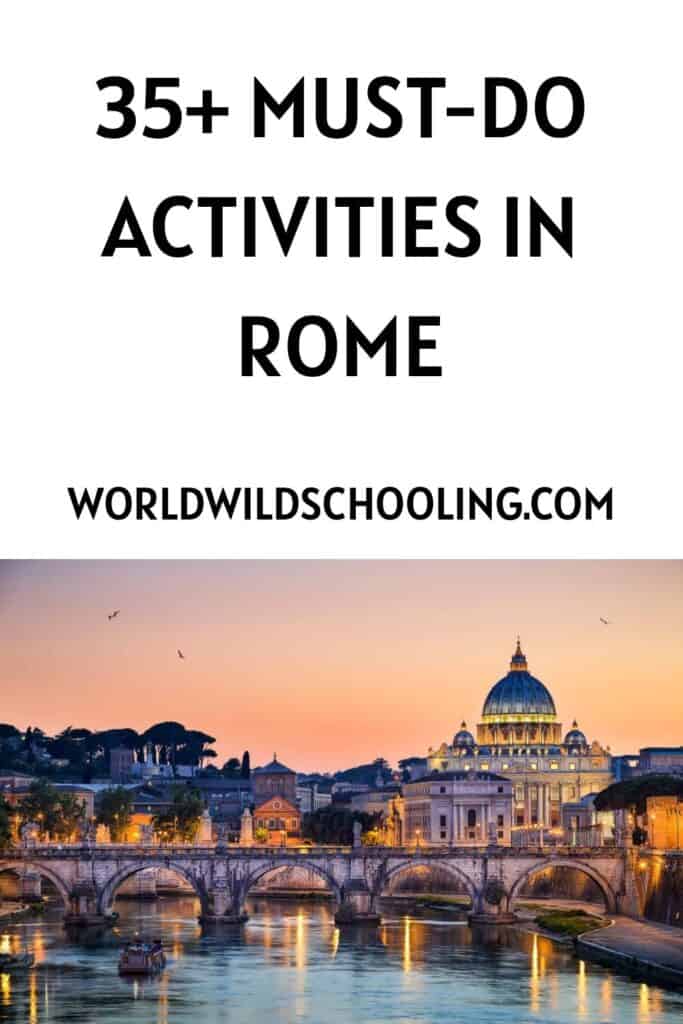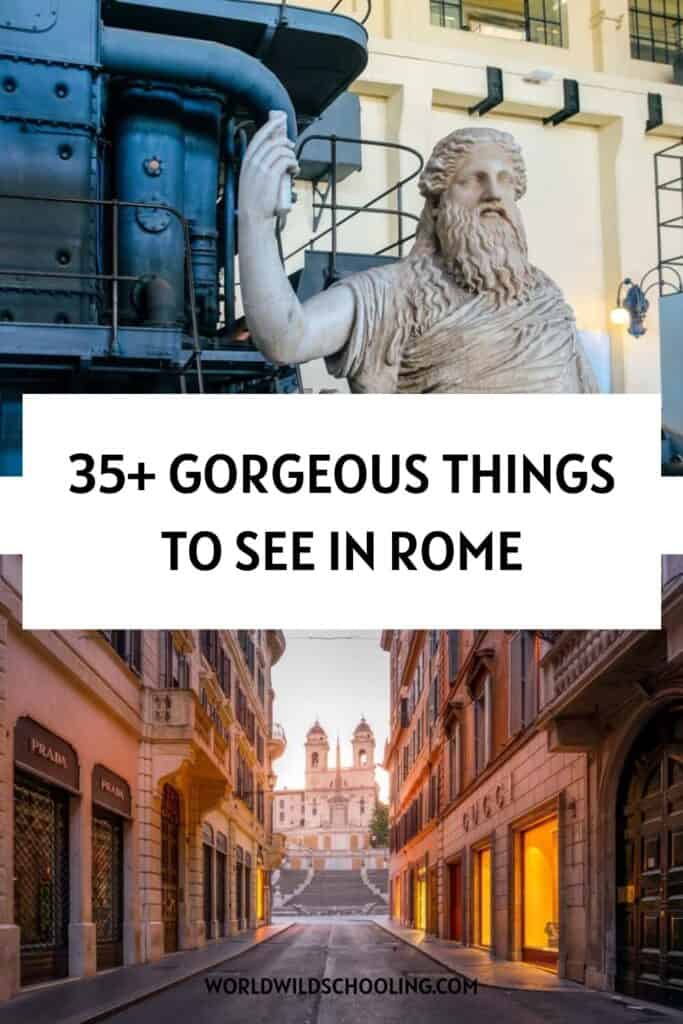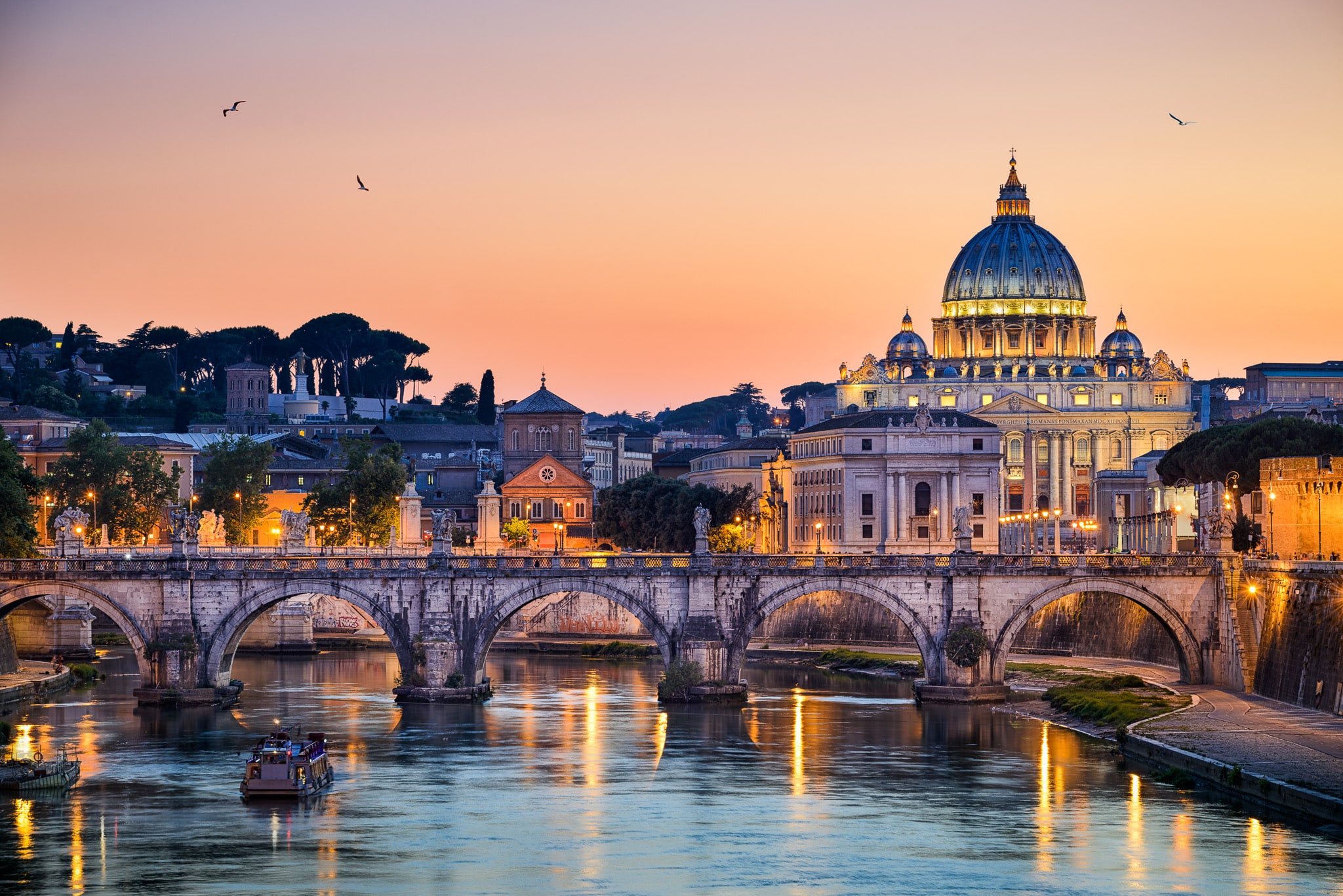35+ Best Things To Do in Rome
All recommendations on World Wild Schooling are independently selected by our editors. We may earn an affiliate commission from purchases made through our links.
Stepping into Rome for the first time? It’s easy to feel overwhelmed with so much history around every corner. But you’re in luck. This guide will give you all the best things to do in Rome.
Now, you might be thinking: Rome is vast. How do I choose where to go? No worries, we’ve got your back. After multiple trips, we’ve picked the top things to do in Rome.
Discover the best things to do in Rome, from history and culture to trattorias and gelato in lively neighborhoods. All you need to know not to miss out!
In a Nutshell
- Best hotels
- Best luxury hotel: Villa Agrippina Gran Meliá
- Best midrange hotel: Atypical Rooms
- Best budget hotel: Design 18
- Best activities:
1. Explore the Colosseum
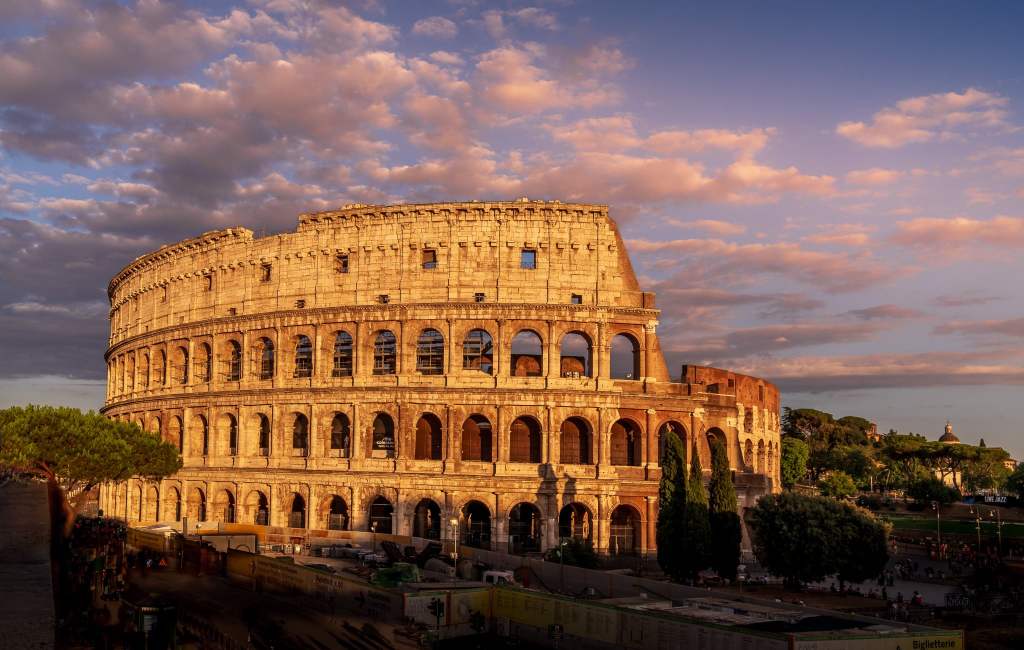
The Colosseum was built between 72-80 AD. The building started under Emperor Vespasian and finished under his son, Titus. These leaders were part of the Flavian dynasty, which is why it’s also called the Flavian Amphitheatre.
Did you know its name might come from a giant statue of Nero, similar to the famous Colossus of Rhodes? Not only is it the largest amphitheater from ancient times, but it’s also the biggest standing one today. Imagine this: over 50,000 people cheering as wild beast hunts, gladiator fights, and public executions took center stage in the arena.
Get your tickets early if you want to peek into that thrilling past! Or even better book a guided tour of the Colosseum (with optional access to the arena), Roman Forum and Palatine Hill to make the most out of it!
There is also a guided tour with arena and underground access. See the tunnels linking the Colosseum to the gladiator training center, the Ludus Magnus. Discover chambers for wild animals and the elevators that brought them to the arena.
Recommended tour:
- Enjoy a guided tour of the Colosseum, Roman Forum, and Palatine Hill with skip-the-line tickets. See where gladiators and emperors once stood in ancient Rome.
- ⭐️ RATING: 4.5/5 Stars | ⏳ TOUR LENGTH: 2.5 hours | 💭REVIEWERS say: The guide was excellent, he explained everything in great detail and in depth. | ✅Book it!
Read also: Most Expensive Cities to Live in Italy
2. Visit the Pantheon
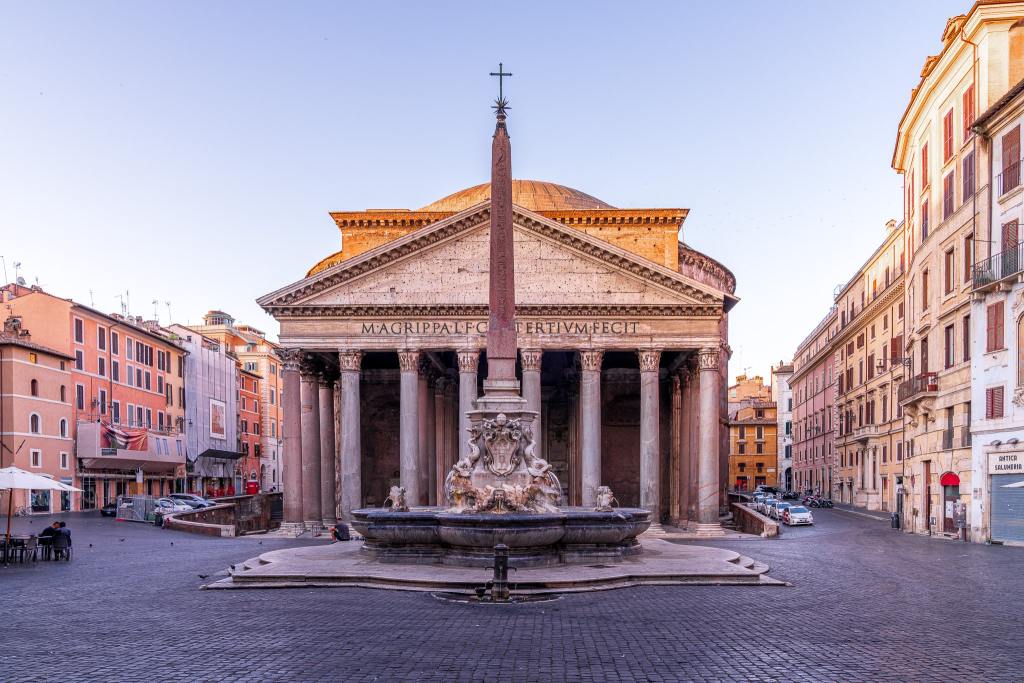
The Pantheon is an architectural masterpiece from ancient Roman times that has been remarkably preserved. The sign on the Pantheon tells us Agrippa first built it. But it didn’t last long, as it burnt down.
Then, in 125 AD, Emperor Hadrian gave it a makeover. Since 609 AD, it’s been used as the Catholic church called the Basilica of St. Mary and the Martyrs. Due to its continuous use, it is now one of Rome’s best-preserved ancient buildings.
Inside, you’ll find the resting places of famous artists like Raphael and Annibale Carracci. Two of Italy’s kings, Vittorio Emanuele II and Umberto I, and Queen Margherita are buried there too.
Have you ever noticed the open hole, or oculus, at the top of the Pantheon’s dome? That’s been open since the beginning, so when it rains, water falls through and lands on the floor inside.
The Romans tilted the floor slightly, about 30 centimeters (12 inches) to be exact, and added drains. This way, the water runs off and out of the building when it rains. Before you go, remember to book your guided tour or grab your skip-the-line tickets early!
Recommended tour:
- Experience the Pantheon in Rome on a guided tour. Enjoy skip-the-line access and spend more time diving into its rich history.
- ⭐️ RATING: 4.8/5 Stars | ⏳ TOUR LENGTH: 45 minutes | 💭REVIEWERS say: Grateful to have been able to skip the line as it was packed outside. Guide was knowledgeable and we were able to hear her clearly through the headset. | ✅Book it!
3. Explore the Vatican Museums and Sistine Chapel
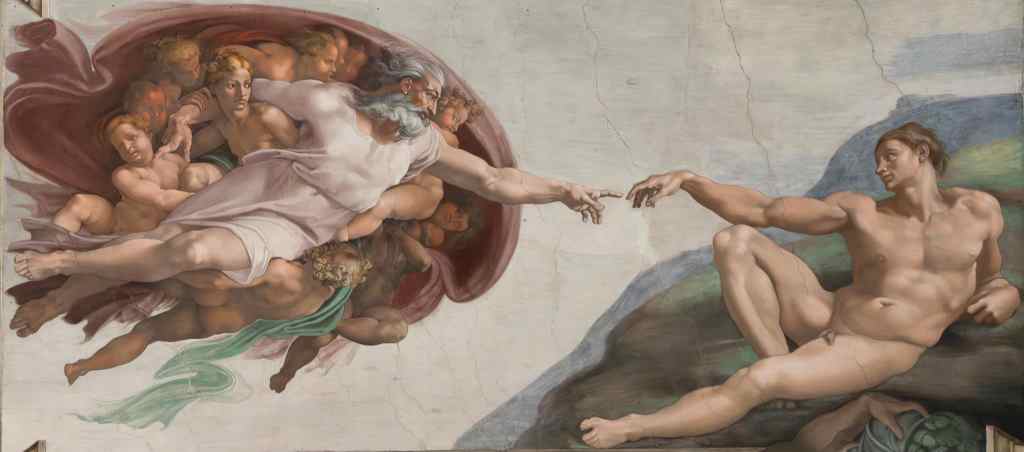
The Vatican Museums hold a massive collection of art that the Catholic Church and different popes have gathered over the years. Think famous Roman sculptures and some of the world’s best Renaissance art. It all started in the early 1500s, thanks to Pope Julius II.
And the highlights? Check out the Sistine Chapel, especially Michelangelo’s work on the ceiling, like the Creation of Adam. Don’t forget to see Raphael’s School of Athens and the stunning sculpture Laocoön and His Sons.
To save time, book a guided tour or buy skip-the-line tickets online before you go. This way, you skip the long wait!
Tip
For a VIP treat, book an early guided tour of the Vatican Museums and Sistine Chapel. You’ll have he place to yourself!
Recommended tour:
- Enjoy a guided tour of the Vatican Museums, Sistine Chapel and St. Peter’s Basilica. Enjoy skip-the-line access and spend more time diving into its rich history.
- ⭐️ RATING: 4.6/5 Stars | ⏳ TOUR LENGTH: 3 hours | 💭REVIEWERS say: A great tour of all the highlights of the Vatican. Good value for money and it was great to be able to skip the line. | ✅Book it!
4. Climb to the Top of St. Peter’s Basilica
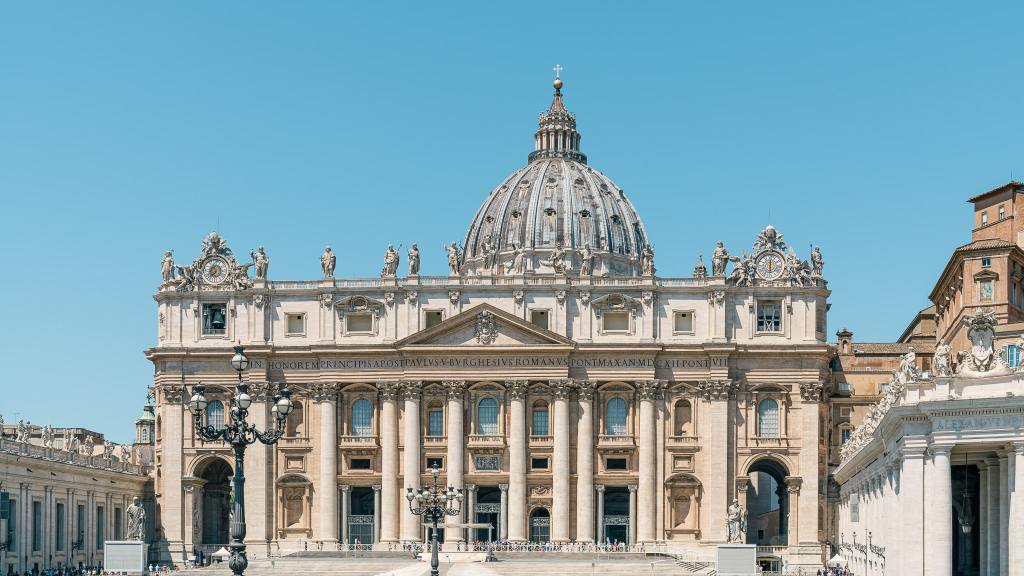
St. Peter’s Basilica (Basilica di San Pietro), located in Vatican City within Rome, is a masterpiece of the Renaissance style. Popes Nicholas V and Julius II envisioned it in the 15th century as a replacement for the old St. Peter’s Basilica, a structure from the fourth century. It is also the world’s largest church in terms of interior size.
The basilica is believed to be the resting place of Saint Peter, one of Jesus’s prominent apostles and the first Pope of Rome. It’s a primary pilgrimage site and hosts several liturgical ceremonies by the pope, attracting crowds ranging from 15,000 to 80,000 attendees.
Recommended tour:
- Enjoy a guided tour of the Vatican Museums, Sistine Chapel, and St. Peter’s Basilica. With skip-the-line access, you can spend more time immersed in the city’s rich history.
- ⭐️ RATING: 4.6/5 Stars | ⏳ TOUR LENGTH: 3 hours | 💭REVIEWERS say: A great tour of all the highlights of the Vatican. Good value for money and it was great to be able to skip the line. | ✅Book it!
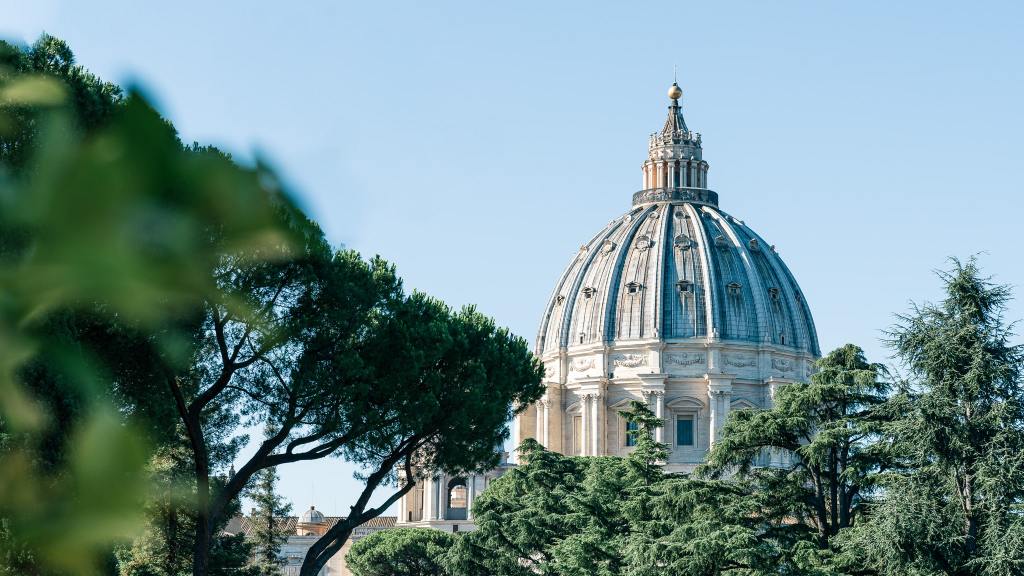
Tips for Visiting St. Peter’s Basilica
- Arrive at St. Peter’s Basilica early to avoid the 3-hour wait. Lines form even before doors open.
- Dress code: cover both shoulders and knees. They offer disposable covers if needed.
- Although the basilica is free to enter, you pay to climb to the dome. An elevator takes you halfway, then expect a few hundred winding steps. Pay €8 for a 500-step climb or €10 for an elevator-assisted advancement to halfway. It’s demanding but worth the view.
- Book a guided tour to skip the line!
Read also: Budget-Friendly Beach Destinations in Italy
5. Stroll Through St. Peter’s Square

Imagine standing in a massive plaza with history under every step. That’s Saint Peter’s Square in Vatican City for you! Directly ahead is the iconic St. Peter’s Basilica.
Both the plaza and the basilica honor Saint Peter. He was Jesus’s apostle and the person Catholics revere as the inaugural Pope.
Your eyes might first catch a towering obelisk, a relic from ancient Egypt, standing tall since 1586. But then, you’ll notice the genius design of the entire square.
Thanks to Gian Lorenzo Bernini’s vision, the space was transformed about 400 years ago. His design features grand columns that welcome and surround everyone who enters. And let’s not forget the fountains—one by Bernini and the other by Carlo Maderno—that add a touch of elegance.
This space was designed so everyone could gather and see the Pope when he spoke or gave blessings.
6. Toss a Coin Into Trevi Fountain
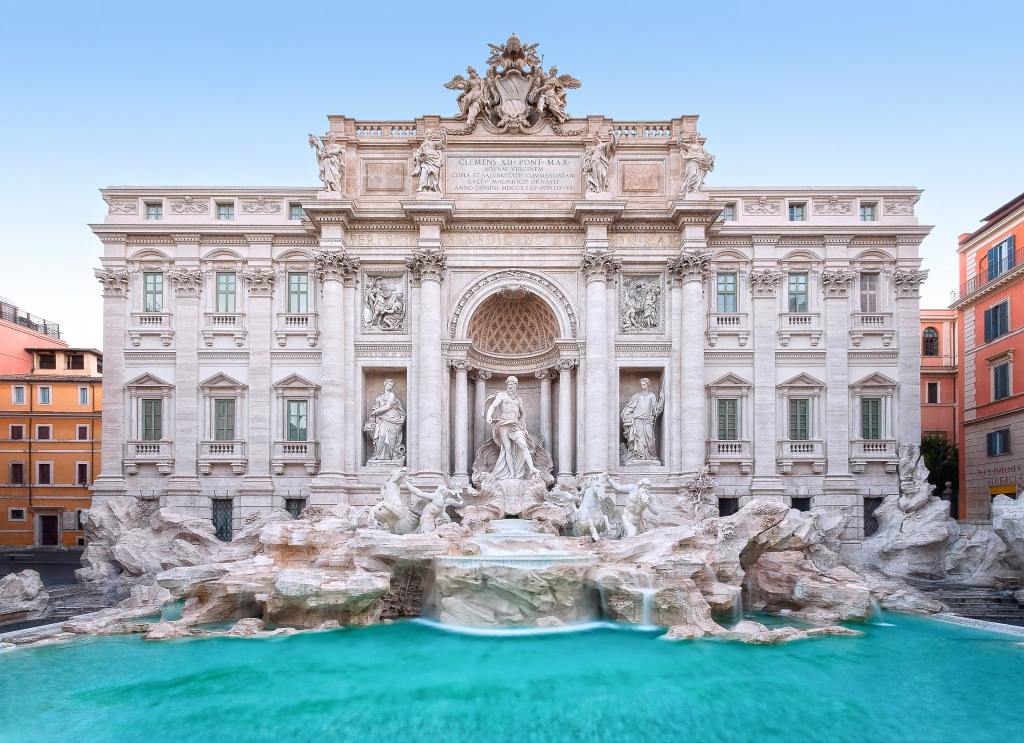
This 18th-century masterpiece in the Trevi district was crafted by Nicola Salvi and finished by Giuseppe Pannini in 1762. It’s not just any fountain; it’s the largest Baroque fountain in Rome and has gained worldwide fame.
The fountain stands as the end point of the Acqua Vergine, a revival of the Aqua Virgo, one of ancient Rome’s primary water sources.
According to legend, a virgin helped Roman experts find a pristine water source about 13 km from the city in 19 BC. This tale is depicted on the fountain itself. This aqueduct fed the Baths of Agrippa and served Rome for over four centuries.
Have you ever wondered why it’s named “Trevi”? It comes from the Latin “trivium,” meaning where three roads meet. Next time you’re in Rome, toss a coin and make a wish!
Tips for Visiting Fontana di Trevi
- For crowd-free photos, visit the Trevi Fountain between 4 AM and 5 AM. In my experience, it has already started getting crowded around 6 AM!
- While numerous restaurants and gelato shops are nearby, prices rise closer to the fountain.
- Stay vigilant for pickpockets in this area.
Read also: City Breaks in Europe
7. Uncover the Secrets of Castel Sant’Angelo
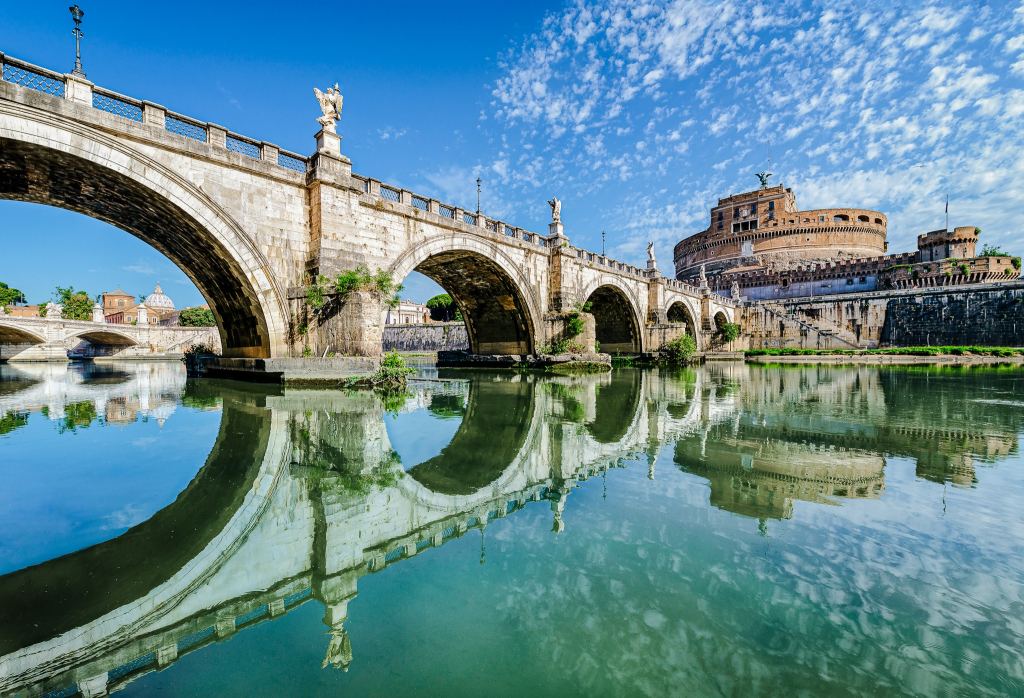
The historic Castel Sant’Angelo (Castle of the Angel) was originally Hadrian’s Mausoleum. The popes transformed it into a fortress and castle, with even a discreet tunnel linking it directly to Vatican City. Now, it stands proud as a museum with age-old frescoes and a selection of medieval weapons.
Adjacent to it is the Pons Aelius bridge, which Hadrian designed. As you walk this bridge from Rome’s center, you’ll be greeted by angel statues, a Baroque touch. Each presents instruments from the Passion of Christ.
From the top of the castle, you’ll be treated to a charming cafe with views of the Vatican.
Remember to book a guided tour or skip-the-line tickets early!
Recommended tour:
- Visit Castel Sant’Angelo with quick entry. Learn about its ancient fortress from a guide, admire the statues, and enjoy breathtaking city views.
- ⭐️ RATING: 4.8/5 Stars | ⏳ TOUR LENGTH: 2 hours | 💭REVIEWERS say: The tour guide was super nice, friendly, and knowledgeable. I really learned a lot from him and also had fun. | ✅Book it!
8. Explore the Roman Forum
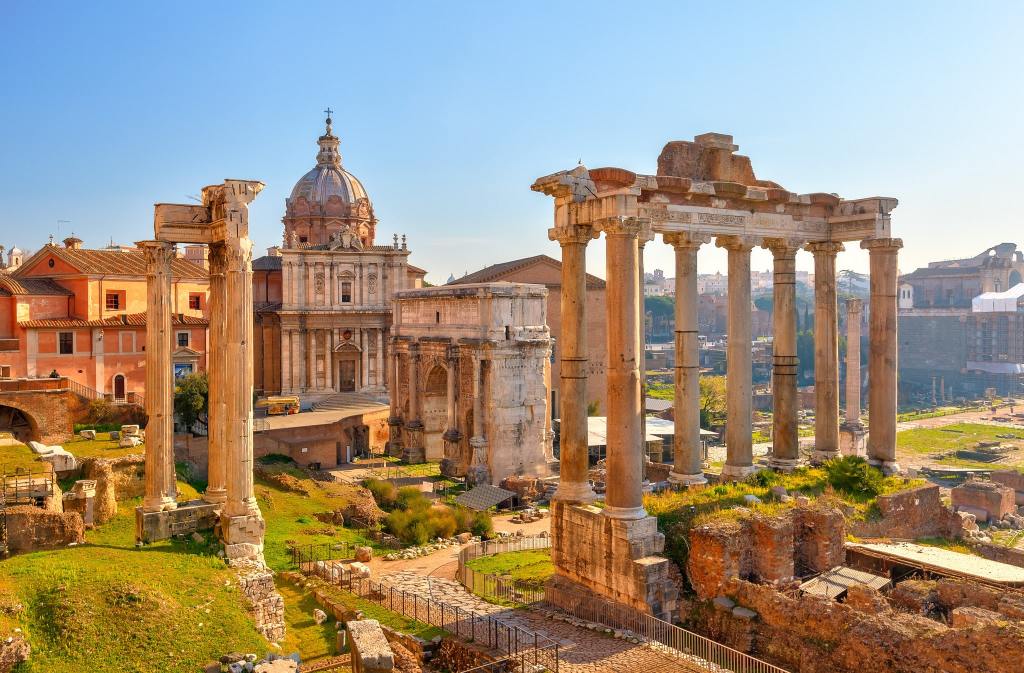
This rectangle of ruins was once the heart of the Eternal City. Named Forum Magnum or simply Forum, this was where the grand parades celebrated victories and where the people of Rome chose their leaders.
Imagine the echoes of public speeches, the tension of trials, and the excitement of gladiator battles right where you stand. And around you? Statues and memorials that honored Rome’s most influential figures.
The site doesn’t say much about its past, so it might be good to book a guided tour or do some homework before you go.
Recommended tour:
- Enjoy a guided tour of the Colosseum, Roman Forum, and Palatine Hill with skip-the-line tickets. See where gladiators and emperors once stood in ancient Rome.
- ⭐️ RATING: 4.5/5 Stars | ⏳ TOUR LENGTH: 2.5 hours | 💭REVIEWERS say: The guide was excellent, he explained everything in great detail and in depth. | ✅Book it!
9. Stroll Through Piazza di Spagna
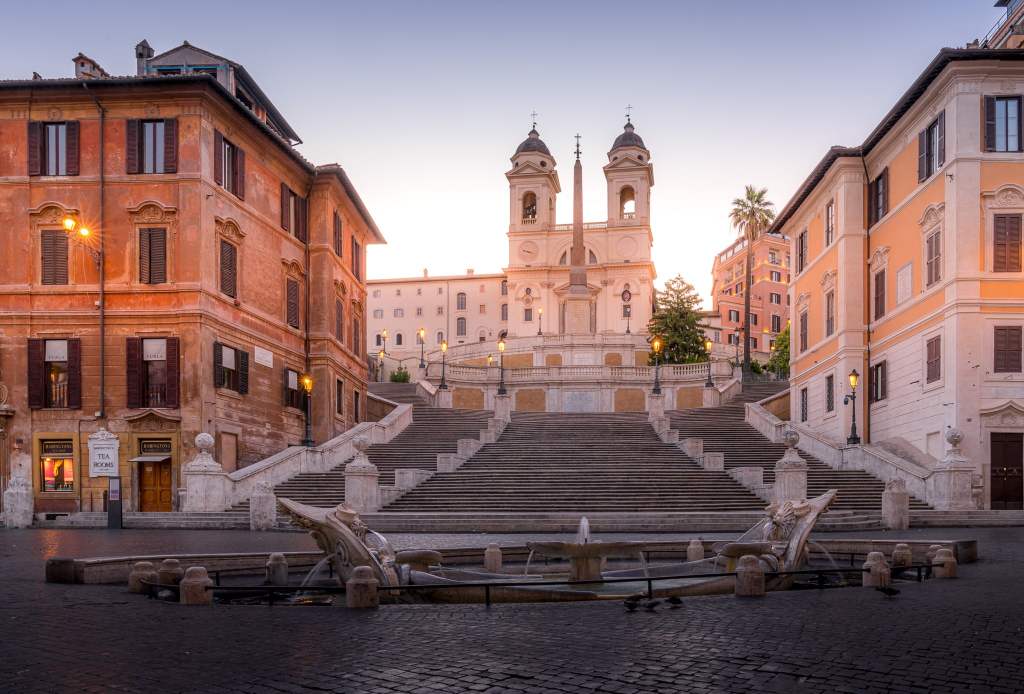
If you find yourself in Rome, Italy, swing by the iconic Piazza di Spagna, best known for its majestic Spanish Steps. The square got its name from the Palazzo di Spagna, which houses the Embassy of Spain.
Those famous 135 steps? They were introduced to the world in 1725 by Pope Benedict XIII. This grand staircase connects the Spanish embassy to the Church of Trinità dei Monti.
In the center, you’ll spot the Fontana della Barcaccia, a baroque masterpiece crafted by Pietro Bernini and his son, Gian Lorenzo Bernini. While you’re there, glance to the right of the steps, and you’ll see the house where the English poet John Keats lived, now a museum. The Column of the Immaculate Conception stands in Piazza Mignanelli.
You can easily reach the square by metro by stopping directly at the piazza, and it’s close to many other popular spots in Rome. Nearby, you’ll find a range of shops from mid-range to upscale and plenty of dining options. Due to the crowds, be cautious of pickpockets. For a quieter experience, visit early in the morning.
Read also: Top Weekend Destinations in Europe
10. Wander Around Piazza Navona
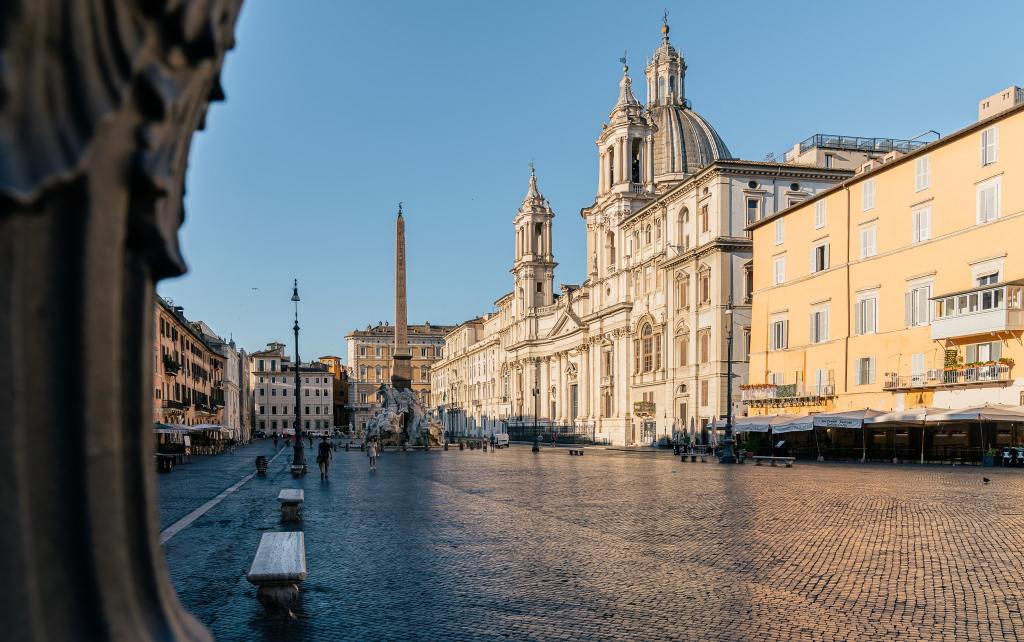
Step into Piazza Navona, a lively public square buzzing with cafes and restaurants. While the Piazza Navona of today is a hub for tourists, artists, and local Romans, the original stadium built by Emperor Titus Flavius Domitianus in 80 AD had a different fate. After the Western Roman Empire crumbled, the once grand stadium was left in ruins and even used as a source for building materials.
Romans of the past flocked here, not for coffee or gelato like today, but to watch exciting games. That’s why it got the name “Circus Agonalis,” which means “competition arena.”
The square boasts three fountains: Fontana del Moro, Fontana de’ Calderari, also known as Fontana del Nettuno, and the famous Fontana dei Quattro Fiumi (Fountain of the Four Rivers), designed by Bernini in 1651.
11. Climb the Palatine Hill
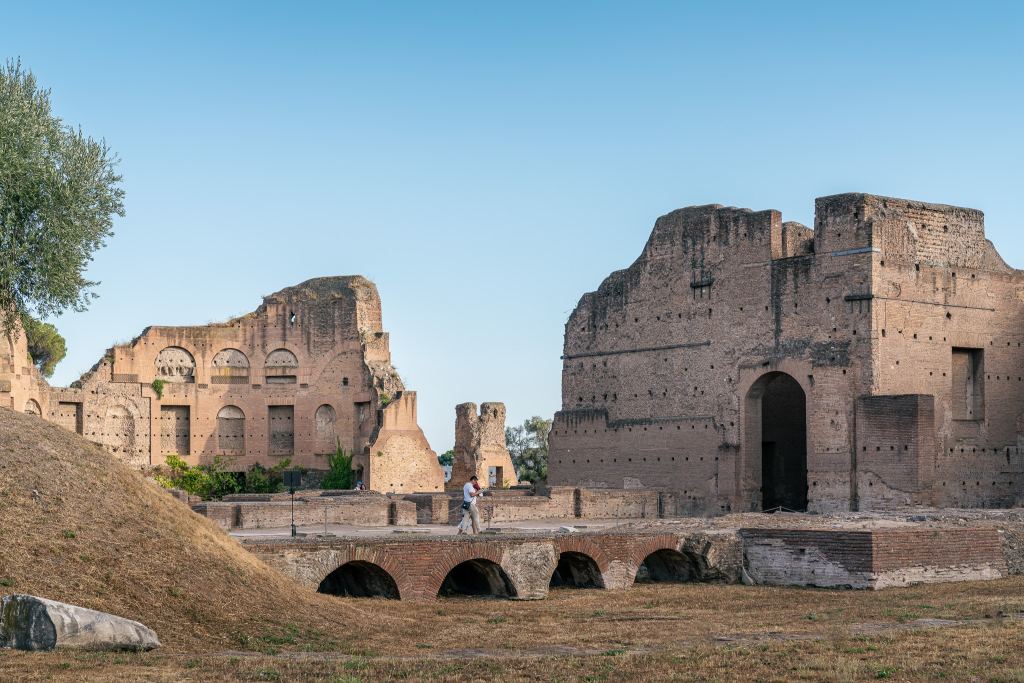
The Palatine Hill wasn’t just any hill in Rome; it was where emperors like Augustus chose to build their majestic palaces. Some say it’s named after settlers from Pallantium in Arcadia, while others argue its name is linked to the word “palate.” Interestingly, this hill gave us the word “palace.”
From Palatine Hill, you’ll be treated to a spectacular view of the entire Roman Forum archaeological sites. To fully grasp the significance of the ruins, consider a guided tour.
Recommended tour:
- Enjoy a guided tour of the Colosseum, Roman Forum, and Palatine Hill with skip-the-line tickets. See where gladiators and emperors once stood in ancient Rome.
- ⭐️ RATING: 4.5/5 Stars | ⏳ TOUR LENGTH: 2.5 hours | 💭REVIEWERS say: The guide was excellent, he explained everything in great detail and in depth. | ✅Book it!
12. Enjoy a Food Tour

Rome’s food tour overview lets you experience the essence of Roman gastronomy in iconic districts. Choose between the lively historic district’s selection of Trastevere or the Jewish Quarter, each brimming with tales and flavors.
Indulge in Rome’s street food delights, from crispy supplì to mouthwatering pizza. Alongside the delicacies, this highly rated food tour offers cultural insights into landmarks like the Portico of Octavia.
Recommended tour:
- Discover Rome’s tastes with a guided street food tour. Wander the historic Jewish Quarter or explore Trastevere. Relish local treats like supplì, pizza, and creamy gelato.
- ⭐️ RATING: 4.8/5 Stars | ⏳ TOUR LENGTH: 2.5 hours | 💭REVIEWERS say: The food was fantastic and our guide gave really good recommendations on how to find authentic traditional Italian places to eat. | ✅Book it!
13. Wander Around Piazza del Popolo
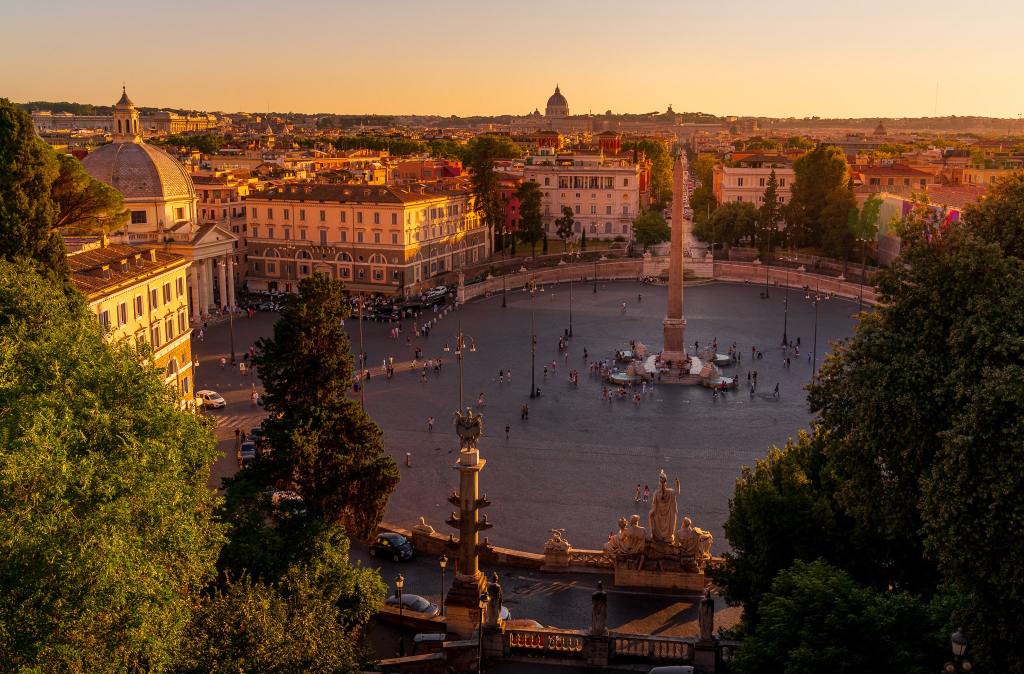
Welcome to Piazza del Popolo, a vast square in the heart of Rome. Though it’s called the “People’s Square” today, it wasn’t named after people. The real inspiration? Poplar trees! A church on the square, Santa Maria del Popolo, is named after these trees.
This square has some dark history, too. Long ago, it was where the city held public executions. The last one happened in 1826. An ancient Egyptian obelisk stands tall in the middle of the square. It was once in Egypt’s city of Heliopolis. The Roman Emperor Augustus brought it to Rome over 2,000 years ago.
As you enter the square, you can’t miss the two almost identical churches, like mirror images of each other. One is Santa Maria in Montesanto, and the other is Santa Maria dei Miracoli.
The busy shopping street, Via del Corso, runs between the two churches. Just stay alert and watch your belongings closely. For a fabulous view of Piazza del Popolo, go to Terrazza del Pincio. If you are lucky, you might stumble upon a live music performance.
Read also: Best Things To Do in Cinque Terre With Kids
14. Uncover Borghese Gallery
If you’re in Rome craving art, the Galleria Borghese is the place to be. Located in what used to be the Villa Borghese Pinciana, this gallery showcases the impressive Borghese Collection, kicked off by Cardinal Scipione Borghese, the nephew of Pope Paul V.
Scipione patronized Bernini and collected Caravaggio’s works, like the Boy with a Basket of Fruit. You’ll also spot big-name masterpieces like Titian, Raphael, Rubens, and Barocci.
Tips for Visiting Borghese Gallery
- Get a guide or at least an audio guide. It will help you understand and appreciate the stories behind these masterpieces.
- The museum stretches over two floors, so plan on spending a good couple of hours exploring.
- Book tickets early. They sell out fast.
- Last-minute tickets are tough to get. The gallery only allows 13 people in every hour. So, if you haven’t booked online tickets in advance, brace yourself for the queue.
15. Row a Boat at the Villa Borghese Gardens
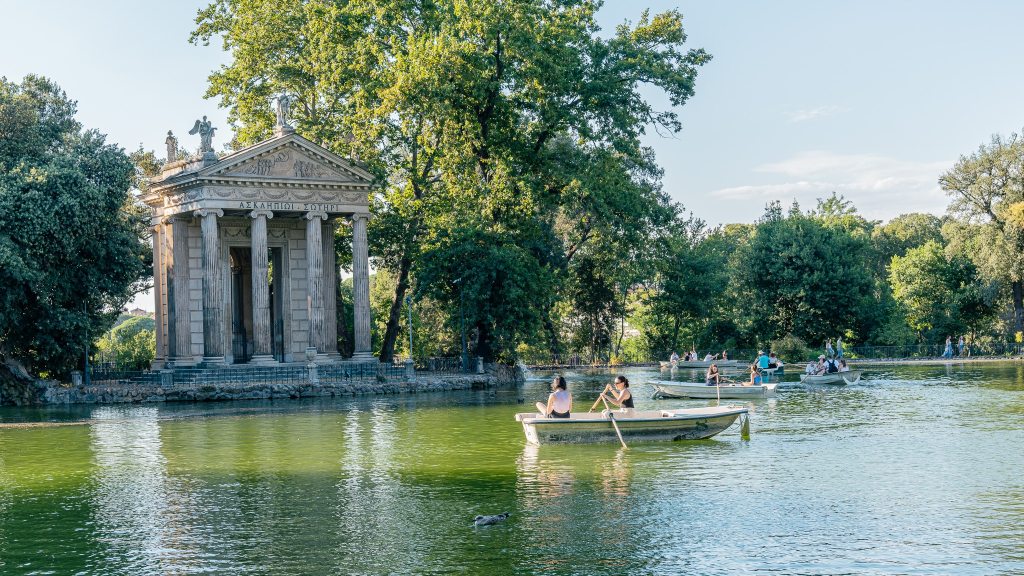
Set in the heart of Rome, Villa Borghese is an urban oasis with landscaped gardens, historic villas, and a lake. The villas now serve as museums (read more below).
For those considering a stroll through its vast expanse, many visitors have found that more than an hour on a rented golf cart is needed to explore it. I highly recommend booking a bicycle or a golf cart to get around.
The park also has a lake with rowboats. There are also food trucks that offer drinks and snacks. This is a great activity if you are visiting Rome with kids.
Read also: Rome with Kids
16. Have Fun at a Pasta-Making Class

Learning how to make pasta in Rome with a chef is the ultimate culinary experience. It’s fun and you get to learn a skill you can bring home with you.
This top-rated tour under the guidance of a professional chef, will teach you how to make traditional fettuccine and ravioli with seasonal red and white sauces, such as amatriciana or cacio e pepe.
After the hands-on session, indulge in your freshly cooked pasta, paired with wine, and end with chef-prepared gelato.
Recommended tour:
- Join a fun cooking class with a professional chef, where you’ll learn to make two fresh pasta dishes. Afterward, enjoy your homemade pasta paired with wine, followed by a serving of gelato.
- ⭐️ RATING: 4.9/5 Stars | ⏳ TOUR LENGTH: 3 hours | 💭REVIEWERS say: We had a fabulous experience – it was interesting, fun, light-hearted and ended with a lovely meal. | ✅Book it!
17. Dive into History at the Capitoline Museums
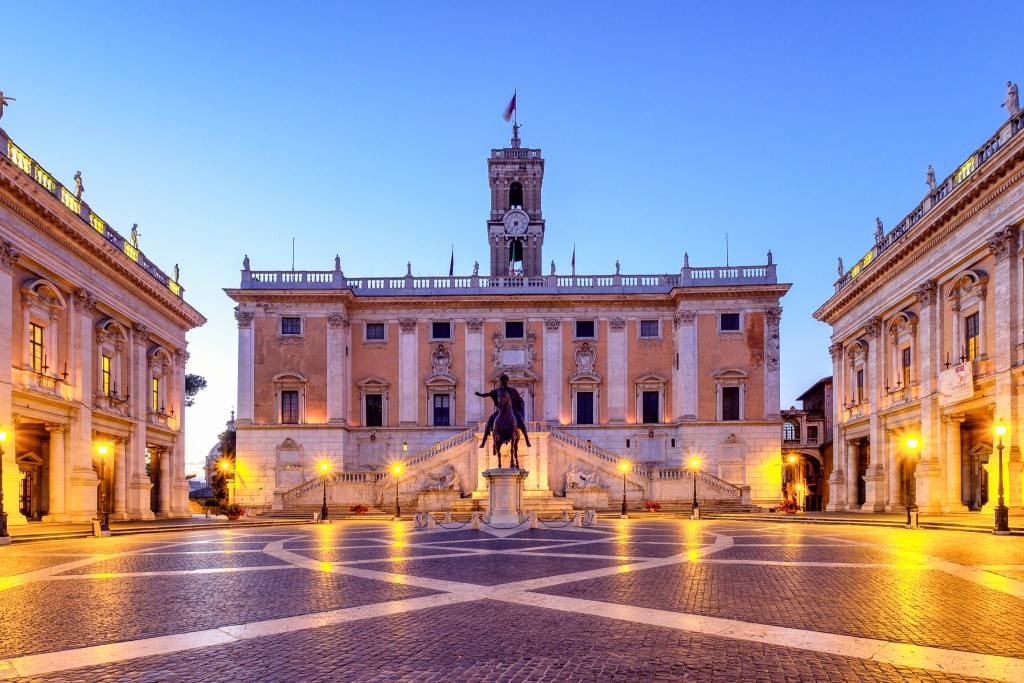
The Capitoline Museums are at Piazza del Campidoglio near the Roman Forum and Colosseum. Located in the heart of the historic center, these were the world’s first public museums.
If you’re keen on diving deep into history, you can set aside half a day; there’s much to see. Don’t forget your headphones for the video and audio tour – they’ll guide you through the rooms and tell you stories behind the artifacts.
On the rooftop terrace, you can catch a panoramic view of the Roman Forum. Take a moment to relax at the terrace bar or grab a bite at the restaurant.
18. Explore Galleria Doria Pamphili
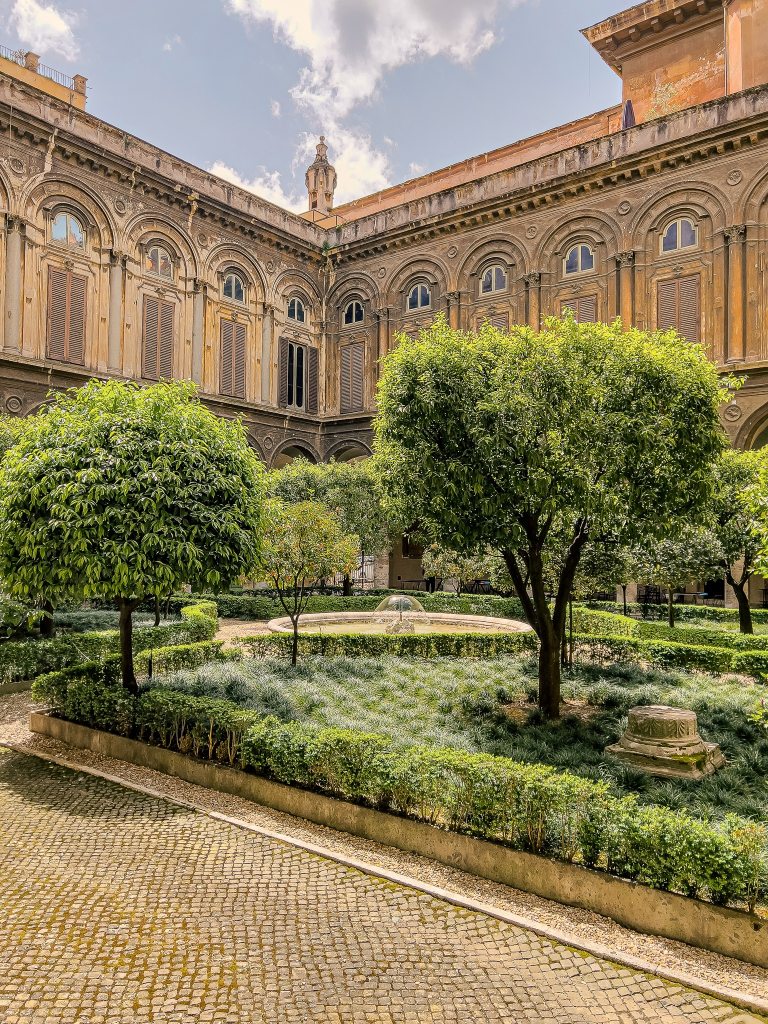
Galleria Doria Pamphili houses one of the city’s largest private art collections with masterpieces by renowned artists like Caravaggio and Velázquez.
The Doria Pamphili family still inhabits the historic palace. Although it is located just a stone’s throw from the Forum, it is a hidden gem.
Read also: Rome with Kids
19. Uncover Vicus Caprarius
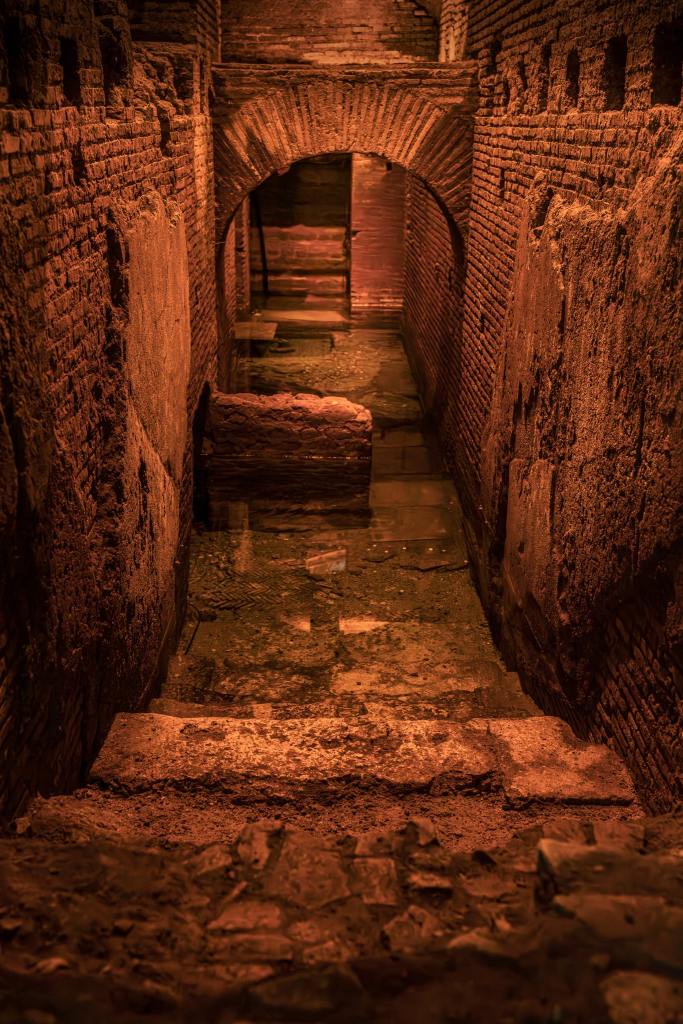
Right next to the famous Trevi Fountain is Vicus Caprarius, a spot many people miss. A long time ago, this place was used as a water tank and houses for Romans. Now, it’s an excellent spot to learn about old Rome.
You need 30 minutes to an hour, and you’ll get to see everything. And if Rome’s sun gets too hot, this place is perfect to cool down and take a break. Don’t miss the extensive audio guide – it deepens into the artwork and the family’s past.
It’s small, and the entry fee is low. So, it’s a good deal, especially if you like relatively quiet places. But there’s one thing you should know: they only let a few people in at a time. That means you need to book your spot before you go.
You can book a guided tour of the Trevi Fountain and Vicus Caprarius.
Read also: Medieval Cities and Towns in Italy
20. Admire MAXXI – National Museum of 21st Century Arts
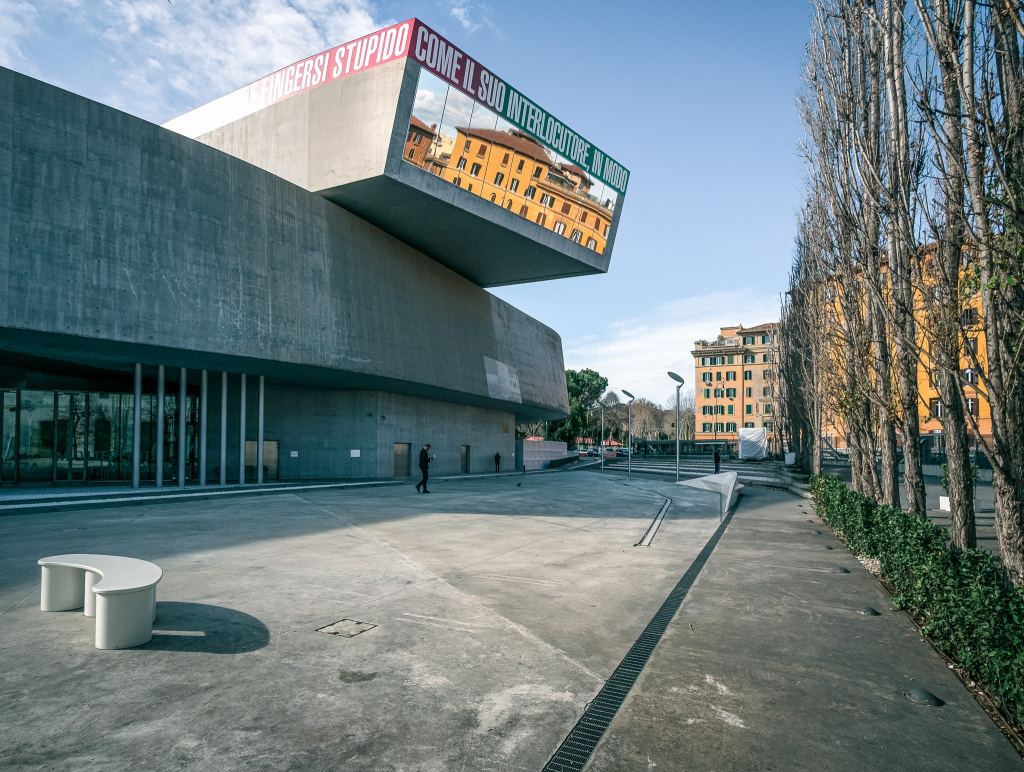
Save this
MAXXI – National Museum of 21st Century Arts is an excellent visit for modern art lovers. This national museum for contemporary art is in a building designed by the legendary Zaha Hadid.
As you wander through its halls, you’ll encounter diverse artistic expressions embodying the dynamism of the 21st century. After soaking in the exhibits, visit the museum cafe/restaurant. Set aside a good 3 hours – there’s much to take in.
21. Unearth Domus Aurea
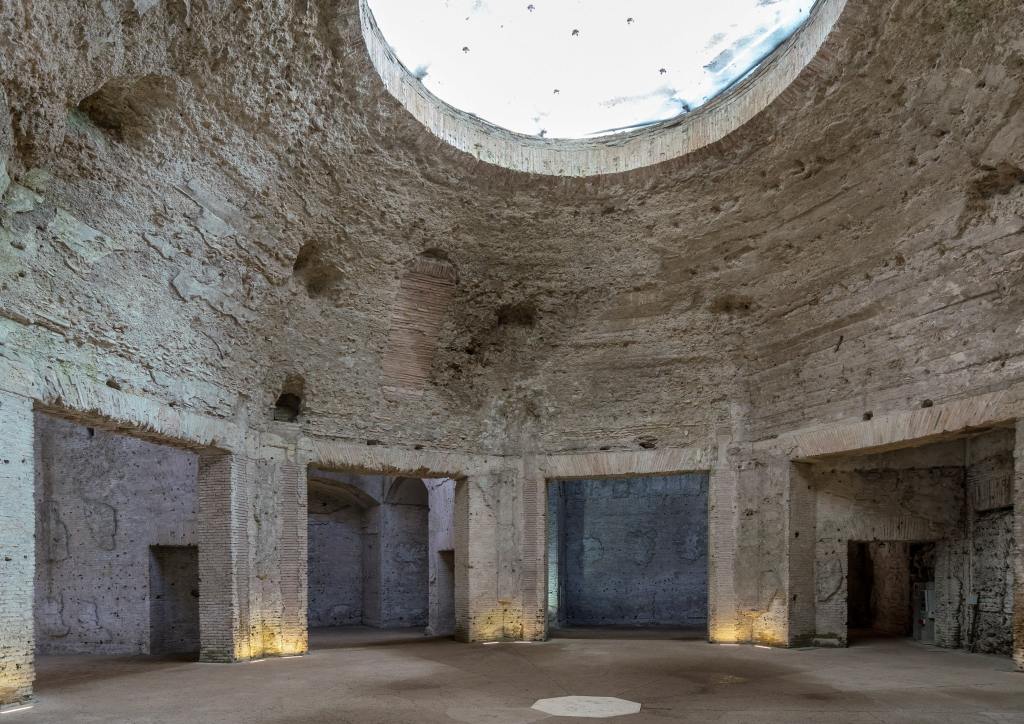
Visit the remnants of Domus Aurea, Emperor Nero’s majestic three-tiered villa. It was once adorned with frescoes.
Constructed between 64-68 AD, this entertainment haven, located near the Colosseum, faced destruction during the massive fire of Rome in 64 AD.
The VR helmets are a highlight of the tour for an immersive experience. You get to see the villa’s grandeur from ancient times.
This is a great option to avoid the heat. The interior can be chilly and damp, so wear appropriate clothes. Book your guided tour in advance.
22. Visit Centrale Montemartini
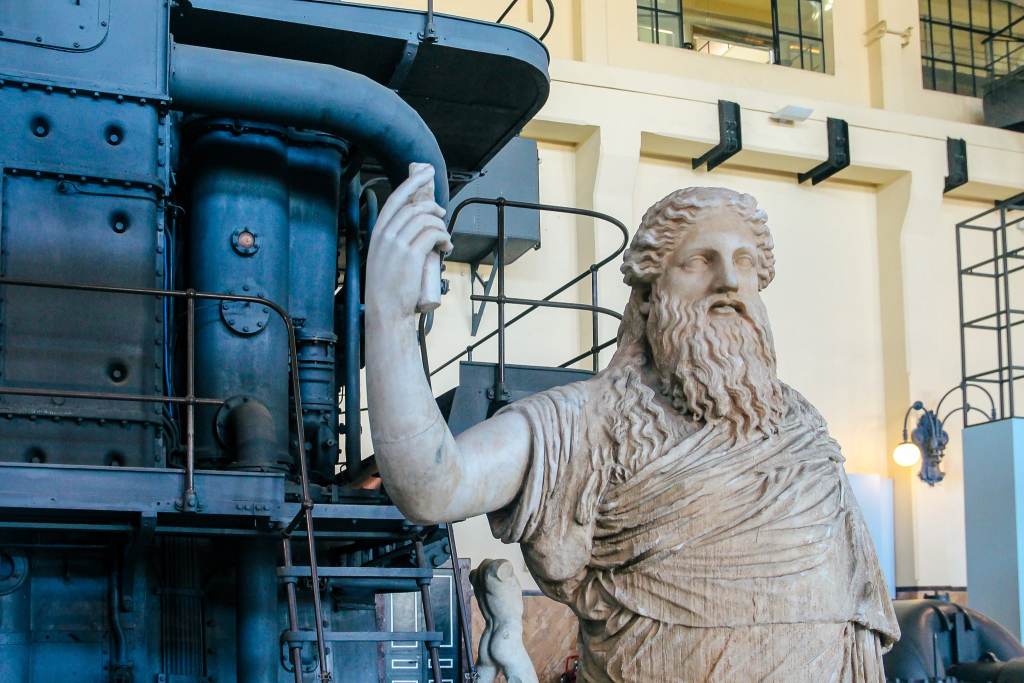
Centrale Montemartini is housed in a former power station and uniquely displays ancient Roman sculptures alongside large electrical machines. This combination creates a striking contrast that sets the museum apart.
Unlike many of Rome’s popular attractions that teem with tourists, Montemartini offers a more relaxed experience, free from the pressures of big crowds. Visitors can appreciate the art and history in a calm environment.
23. Explore Trastevere Neighborhood
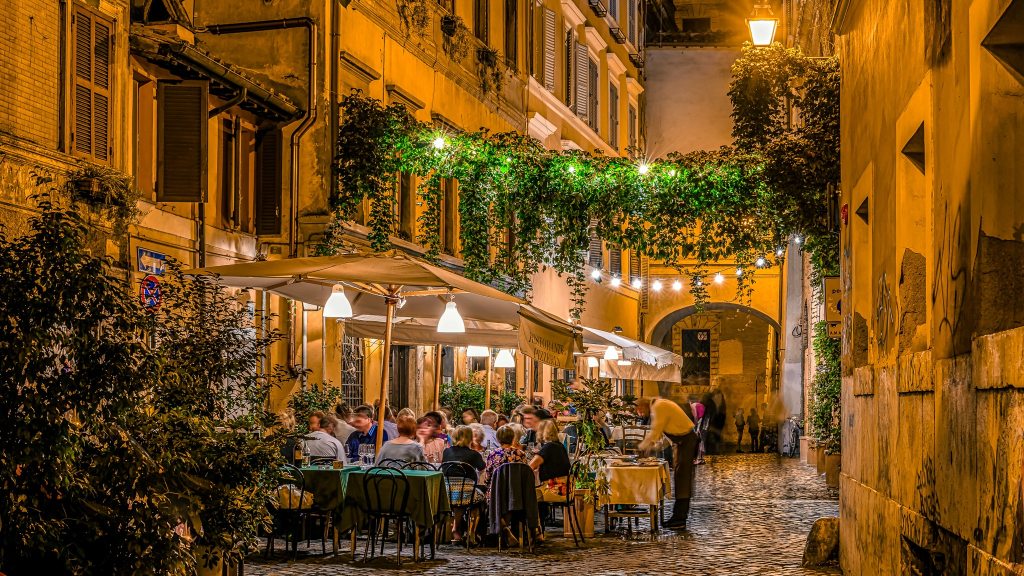
Trastevere is a charming neighborhood in central Rome, west of the Tiber River. It is known for its historic character, with cobblestoned streets and a mix of ancient homes and modern apartments.
Some of the key attractions in the area include the Santa Maria Basilica and Villa Farnesina. Trastevere is a residential favorite and remains popular with locals, students, and tourists.
The neighborhood is alive with nightlife, offering a variety of bars, cafes, and trattorias. It’s great for a food tour.
Recommended tour:
- Join a guided food walk in Trastevere. Dive into Rome’s culinary scene with a local expert, discover hidden spots, enjoy 10+ authentic Roman food tastings, and sip Lazio’s finest wine.
- ⭐️ RATING: 4.8/5 Stars | ⏳ TOUR LENGTH: 3 hours | 💭REVIEWERS say: Would highly recommend this tour and our guide to anyone! You get lots of food for what you pay for and the neighborhood is fun to explore with an Italian! | ✅Book it!
24. Where to Go Shopping in Rome
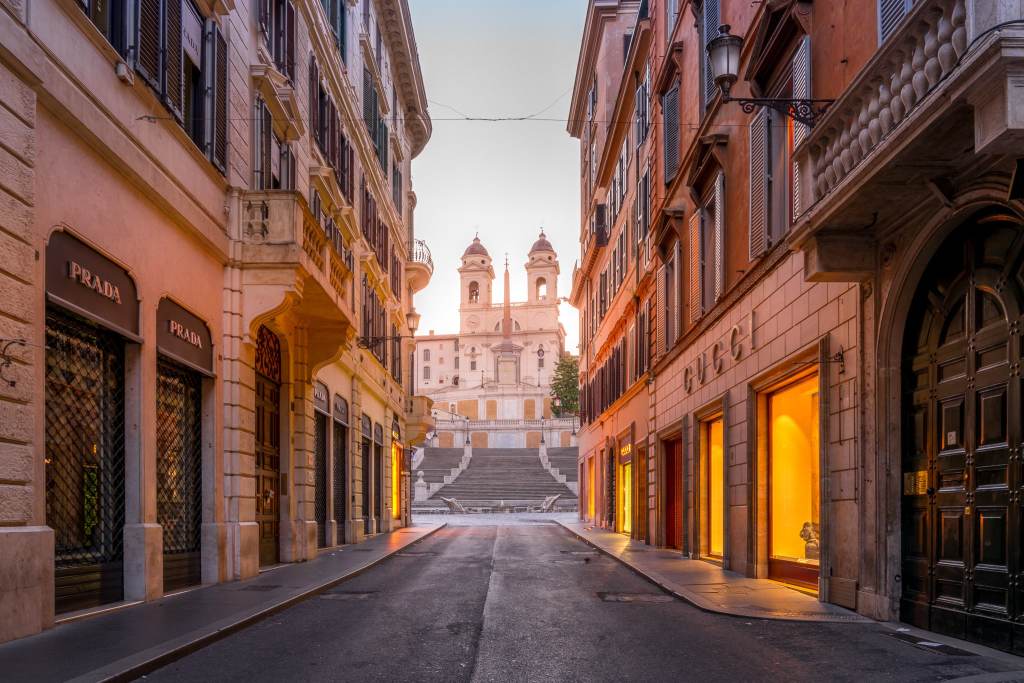
Via del Corso is the main shopping street with both international brands and local boutiques. It stretches from Piazza Venezia to Piazza del Popolo.
Via Condotti is Rome’s top destination for high-end retail with fashion labels like Gucci, Prada, and Ferragamo. It is right in front of Piazza di Spagna.
Via del Corso and Via Condotti are the main shopping streets in Rome. Here are more options:
- Via Cola di Rienzo: Variety of shops, from clothing to housewares, in the Prati district. It’s near Vatican and Castel Sant’Angelo.
- Via del Boschetto: Independent designers and vintage stores on this charming street in the Monti district.
- Trastevere: Bohemian area with artisanal shops with numerous cafes, bars, and trattorias.
- Via del Governo Vecchio: Vintage and antique shopping, lots of cafes and restaurants.
- Testaccio Market: Local street food, wines, and retail stalls.
- Campo de’ Fiori: Fruits and vegetables,
- Galleria Alberto Sordi: Historic shopping arcade in art nouveau building with several shops and cafes.
- Porta Portese Flea Market: Second-hand items, clothes, souvenirs, and antiques. Open on Sundays only, 07.00-14.00. Beware of pickpockets, as it can get crowded.
- Castel Romano Designer Outlet McArthurGlen: Discounted designer brands outside the city center. Not too far from Ostia Antica.
25. Browse Testaccio Market
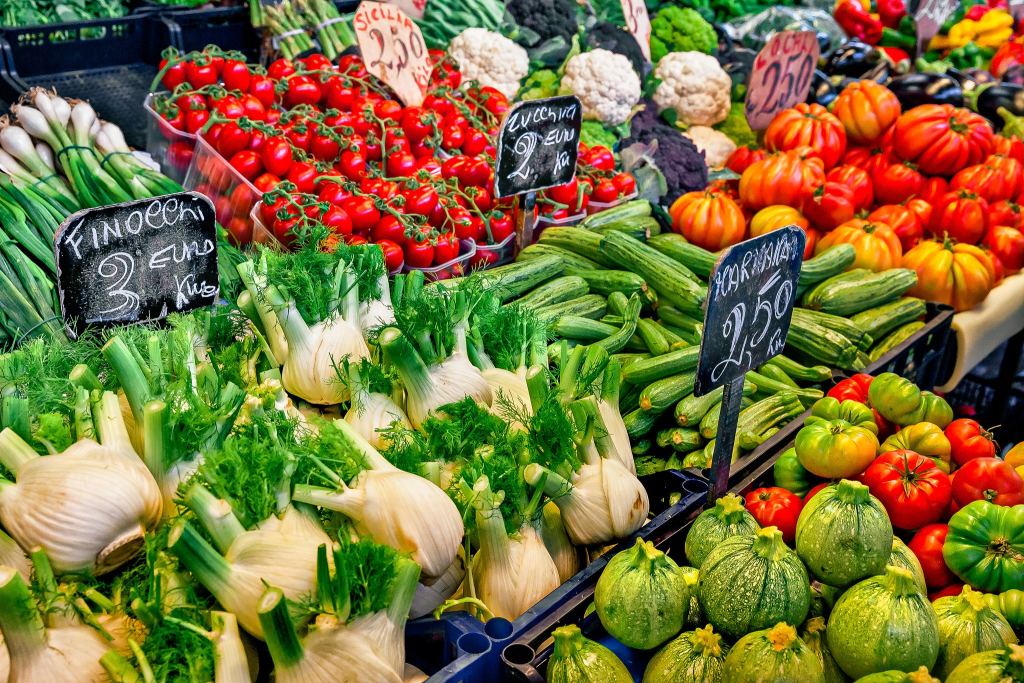
Visit the Testaccio Market, where a modern glass roof covers an ancient Roman archaeological site.
With over 100 stalls, this bustling marketplace offers a rich mix of savory local street food, wines, and sweet treats to clothing and footwear selections. The sandwiches at Mordi e Vai are famous.
While it’s a hub for locals, you’ll also spot some curious tourists. Experience a genuine slice of Roman daily with a food tour life here!
Recommended tour:
- Venture into Testaccio, Rome’s culinary treasure. Join a guided tour through its traditional market, visit eight genuine eateries, and savor a complete lunch paired with wine.
- ⭐️ RATING: 4.9/5 Stars | ⏳ TOUR LENGTH: 3.5 hours | 💭REVIEWERS say: We had a wonderful morning strolling around the market and tasting local delicacies before a beautiful lunch at a traditional restaurant. Highly recommend and a highlight of our trip to Rome! | ✅Book it!
26. Stroll Through Campo De’ Fiori
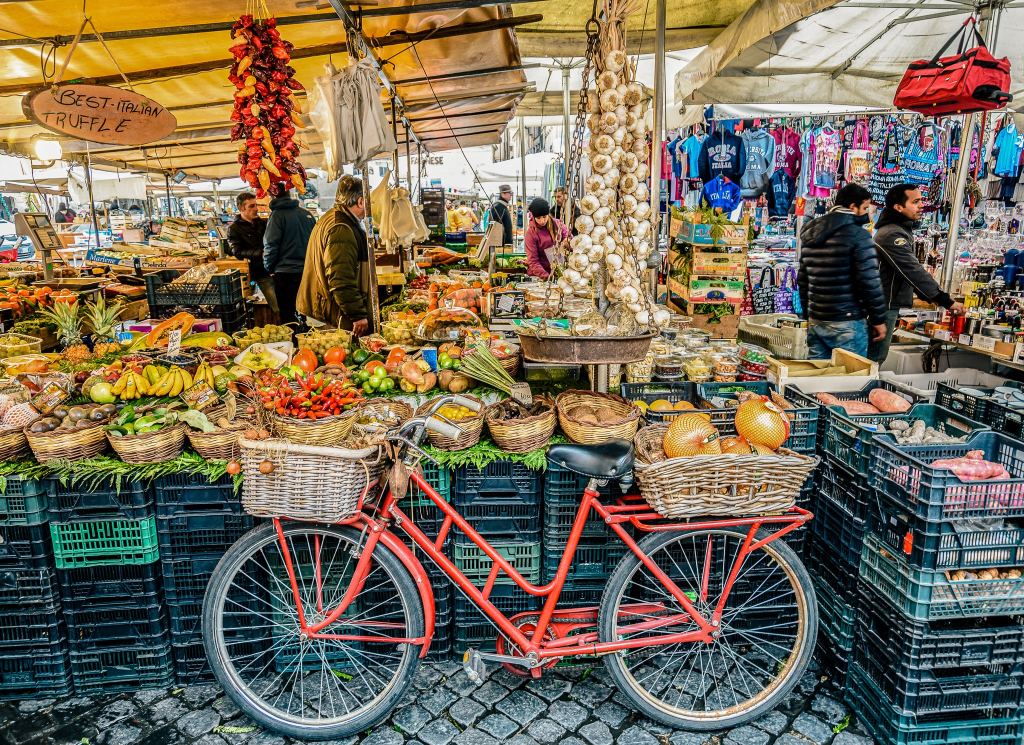
Campo de’ Fiori ia located just a short stroll away from Piazza Navona. It means “field of flowers” in Italian, referencing what it was like in the Middle Ages.
Historically, it was a site for public executions. The hooded figure statue is Giordano Bruno. He was burnt for heresy in 1600 at this spot.
Since 1869, this square has hosted a daily fruit and vegetable market. In the evening, the area transforms into a bustling hub with cafes and restaurants, drawing tourists and the city’s youth.
This highly-rated food tour around Roman neighborhoods includes stops in Campo de’ Fiori, Jewish Ghetto and Trastevere.
Read also: European Capitals of Fashion
27. Explore Mercato Campagna Amica
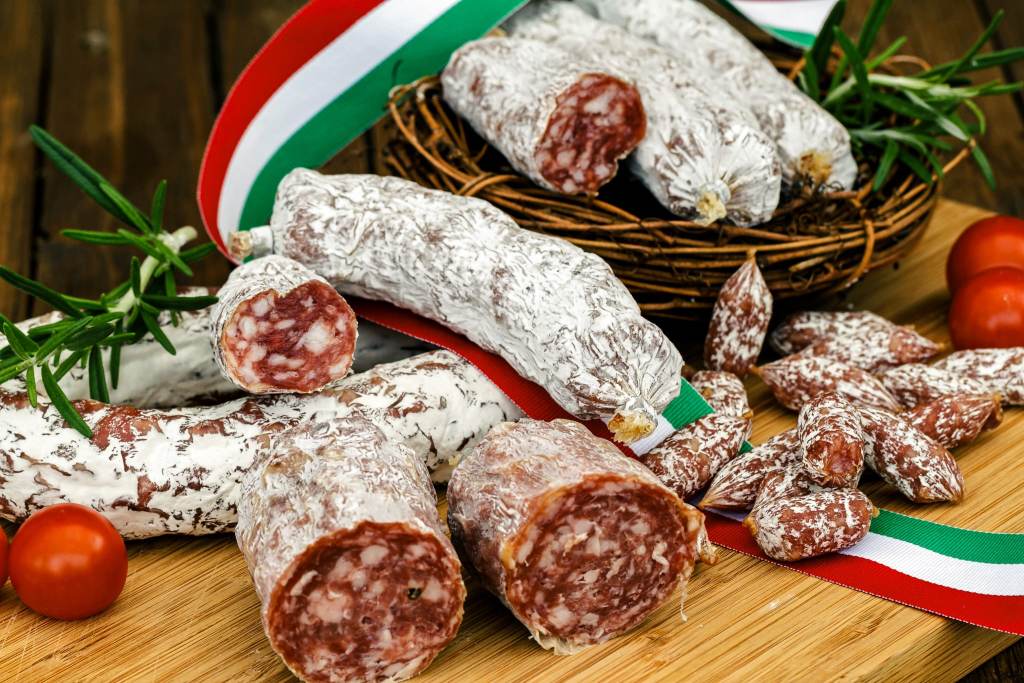
Campagna Amica Market in Rome is an indoor market specializing in local products. You’ll find a variety of foods from grilled meats and salads to vegan options from the Lazio region.
The vendors at Mercato Campagna Amica sell products grown within 100 kilometers. The market emphasizes fresh and sustainable produce, and visitors can also dine in, enjoying meals made from these regional ingredients.
The market is located near the ruins of Circus Maximus, Colosseum, and Roman Forum. It is open only on weekends.
28. Have a Gelato

Enjoying a gelato in Rome is a must! The city offers many gelaterias, each with its unique flavors and charm. From classic stracciatella to exotic fruit combinations, there’s something for everyone.
Giolitti is one of Rome’s oldest ice cream parlors. You can try ice cream with rice flavor. It’s a perfect pit stop, just a stone’s throw away from Pantheon and Trevi Fountain. Just a note, there are usually long lines!
We also liked La Strega Nocciola, near the Spanish Steps, and Gelateria La Romana, a bit further away from the historic center. Venchi is a chain known for its rich chocolate waterfalls., which the kids loved in Rome 🙂
29. Have Dinner at a Trattoria
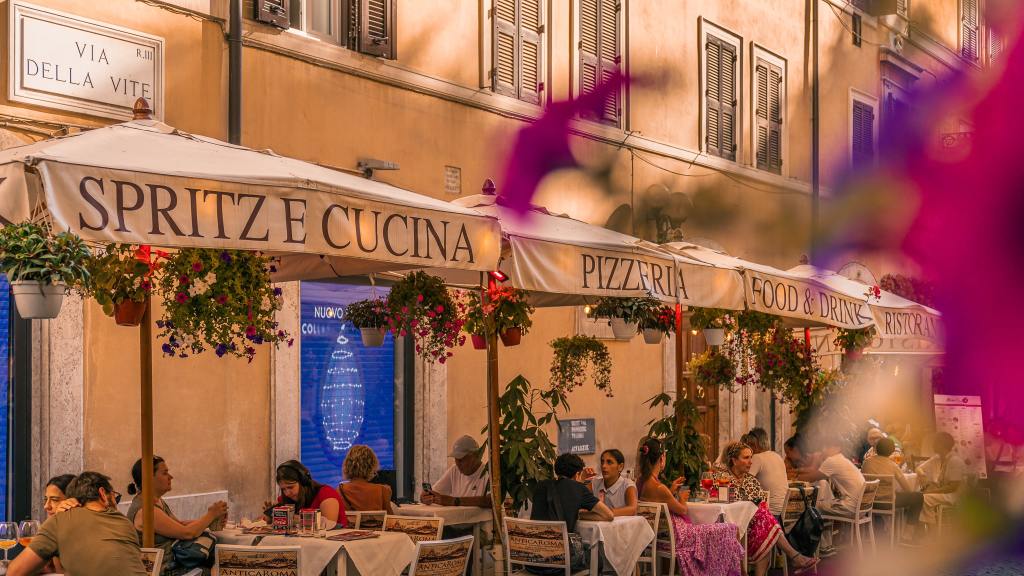
A “trattoria” is a traditional Italian eatery, typically smaller and less formal than a ristorante. Trattorias often have a more relaxed ambiance, where family recipes are passed down through generations. The emphasis is on hearty, authentic regional dishes.
Trattorias are often marked by their checkered tablecloths and chalkboard menus with daily specials made from fresh, local ingredients.
Go to Osteria Nannarella for lasagna and meatballs in oxtail sauce or Tonnarello for amatriciana. Both are in Trastevere, a lovely Roman neighborhood.
30. Experience Rome Opera House
The Rome Opera House, also known as Teatro dell’Opera di Roma, is a historic opera house in the heart of Rome. It was founded in 1880 and has been the venue for many famous operas and ballets. The Rome Opera House is a great place for opera and ballet lovers.
31. Uncover National Roman Museum
The National Roman Museum (Museo Nazionale Romano) in Rome is a set of museums dedicated to ancient Rome’s archaeological and art treasures.
The National Roman Museum is located in four different buildings: the Baths of Diocletian, the Palazzo Altemps, the Crypta Balbi, and the Palazzo Massimo. Visitors can purchase a single ticket that is valid for all four museum buildings.
32. Watch a Game at Stadio Olimpico
Stadio Olimpico is a must-visit for football enthusiasts, having hosted numerous renowned matches. Attending a match here is a must-do in Rome, especially if you support the home team. They offer a brief 40-minute tour for those interested in a quick look around.
33. Step Inside Sant’ivo Alla Sapienza Church
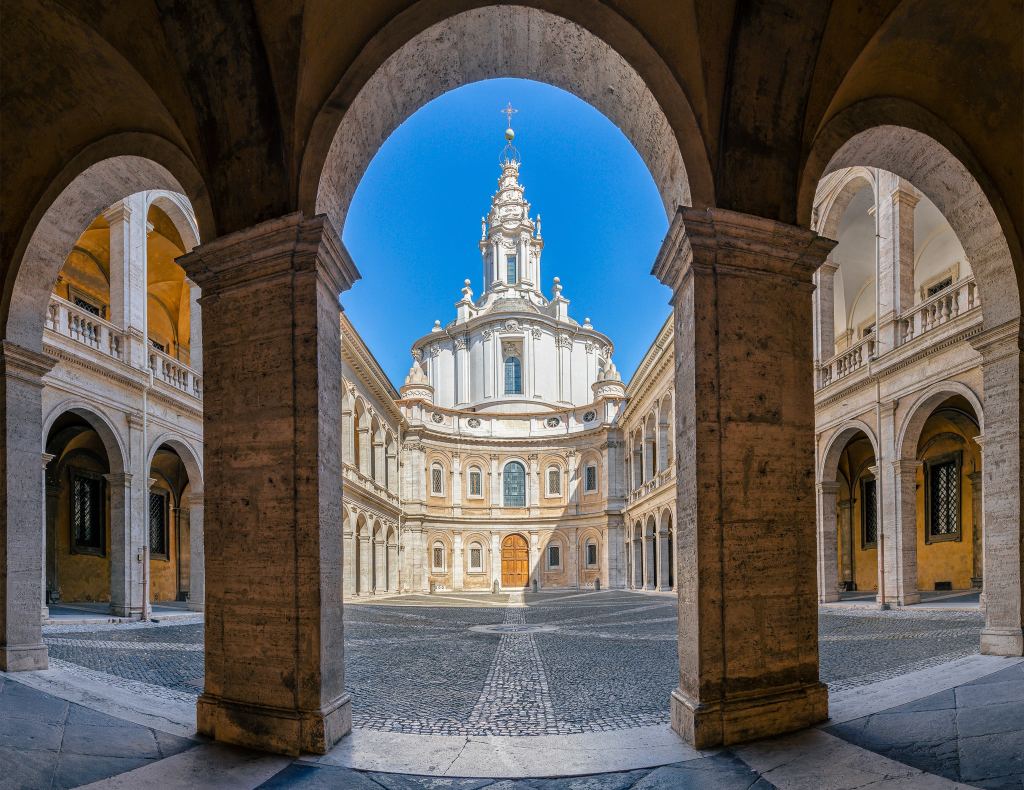
Sant’Ivo alla Sapienza is a baroque church located in Rome. Designed by the renowned architect Francesco Borromini, it’s considered a masterpiece of Roman Baroque architecture.
The church was commissioned by the Roman University, La Sapienza (which means “knowledge” or “wisdom”), and was constructed between 1642 and 1660. One of the most striking features of Sant’Ivo is its unique spiral-shaped spire.
The church is located between Pantheon and Piazza Navona in the courtyard of the Palazzo della Sapienza, the historical seat of the university until the late 19th century. Tourists often overlook this gem, but it is a must-visit for those keen on exploring Rome’s architectural heritage.
34. Explore Ostia Antica
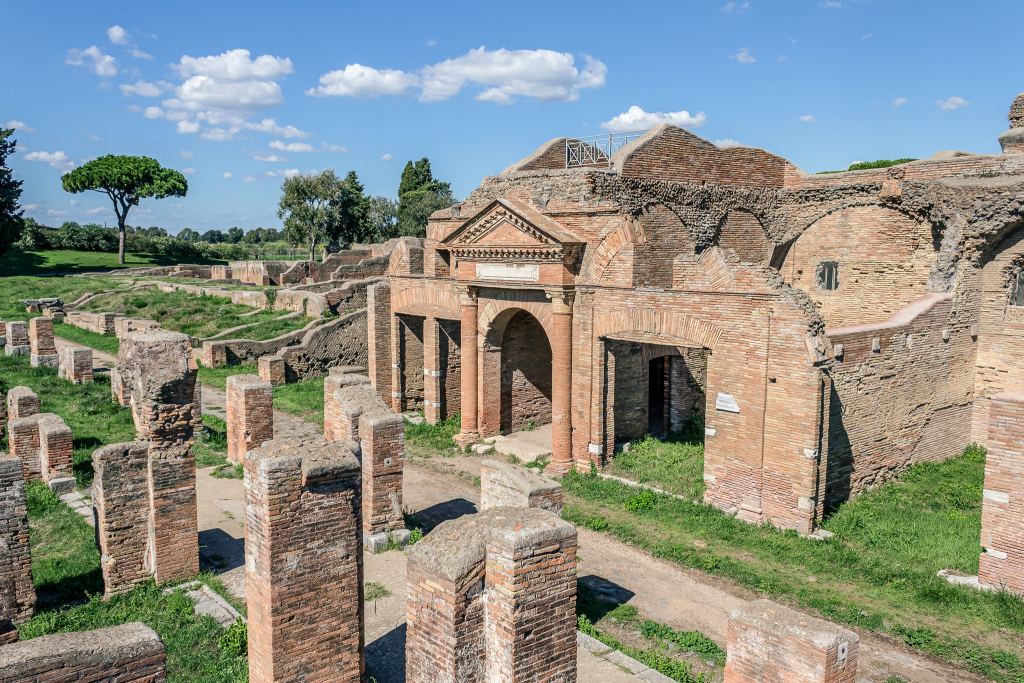
Ostia Antica was Rome’s bustling port city once. , now stands as a well-preserved archaeological site. It offers visitors a glimpse into ancient Roman life with its ruined buildings, streets, and mosaics, showcasing the daily life and commerce of past centuries.
It sits 25 kilometers southwest of modern Rome, near today’s Ostia. Despite initially being located at the Tiber River’s mouth, it’s now 3 kilometers from the sea due to silting. The name “Ostia” stems from the Latin word for ‘mouth’.
it is an accessible day trip from Rome — a mere half-hour by car or 40 minutes using the metro and train.
Ostia Antica Vs Pompeii
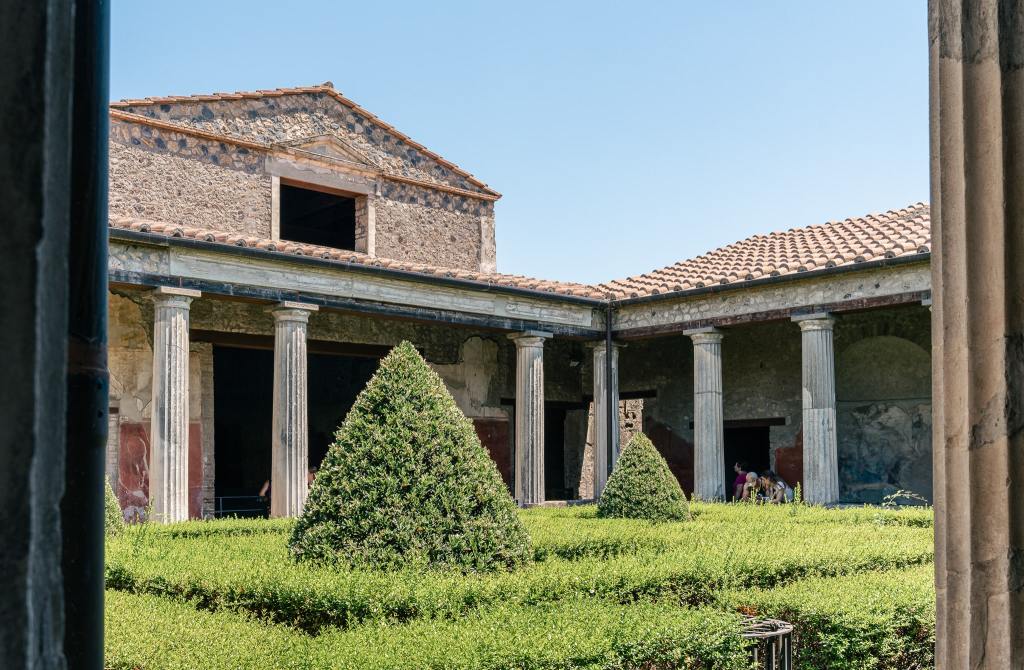
If you’re curious how Ostia Antica compares to Pompeii, another famous archaeological site in Italy, let’s explore the differences.
Pompeii
- Pompeii, famous for its intriguing history and size, is a commitment, often requiring an entire day to explore.
- It offers a peek into a once-wealthy resort town
- Its popularity means large crowds
- Situated farther from Rome, visiting Pompeii might compromise time for other Roman attractions, especially for shorter stays.
- It’s conveniently located on the way to Sorrento, Capri or, the Amalfi Coast destinations.
Ostia Antica
- On the other hand, Ostia Antica, ancient Rome’s port town, caters to the everyday life of merchants and commoners, making it distinct from Pompeii’s upscale residences.
- Fewer tourists frequent it
- It boasts numerous mosaic floors
- It is just a half-hour drive or 45-minute public transport journey from Rome, making it a half-day trip.
Both sites offer unique insights, but convenience and personal interests will determine the best fit.
35. Enjoy a Day Trip to Pompeii and Amalfi Coast
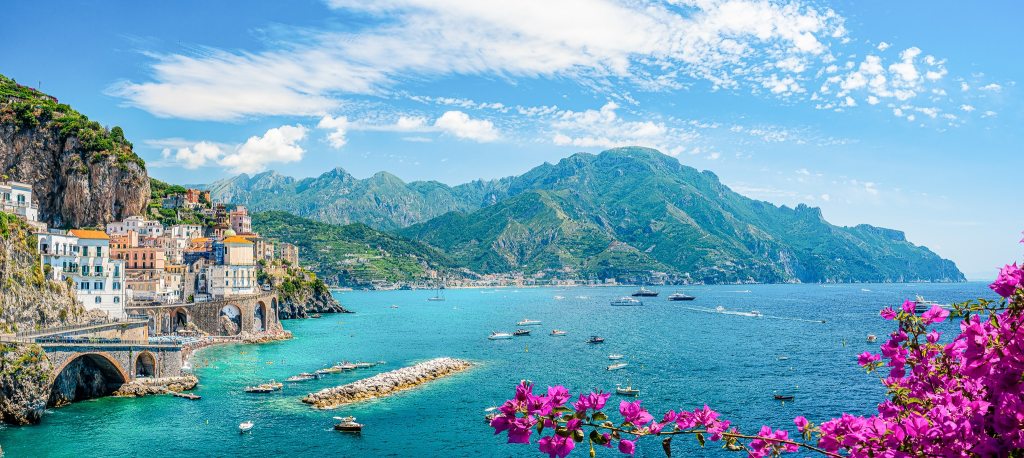
This highly-rated tour takes you to Pompeii, a UNESCO World Heritage Site. Skip the queues with your ticket and explore ancient ruins with an expert guide.
Then, visit picturesque Positano, wander its boutiques, taste limoncello, or relax at a local eatery. Journey along the scenic Amalfi Coast, admiring where mountains meet the sea, and villages dot the landscape.
Recommended tour:
- Travel from Rome to the historic Pompeii in a coach, and later explore the Amalfi Coast and Positano. Learn from a local guide and explore hidden spots.
- ⭐️ RATING: 4.5/5 Stars | ⏳ TOUR LENGTH: 13 hours | 💭REVIEWERS say: We had a wonderful morning strolling around the market and tasting local delicacies before a beautiful lunch at a traditional restaurant. Highly recommend and a highlight of our trip to Rome! | ✅Book it!
Is a Day Trip to Pompeii and the Amalfi Coast Worth It?
If you have the luxury of spending several days on the Amalfi Coast, you’ll be able to enjoy its beauty to the fullest.
Keep in mind that if you plan on returning, it’s best to take your time and instead enjoy the coast at a leisurely pace on a later trip.
However, if you have limited time and it’s a one-time opportunity, consider a day excursion.
Best Time to Visit Rome
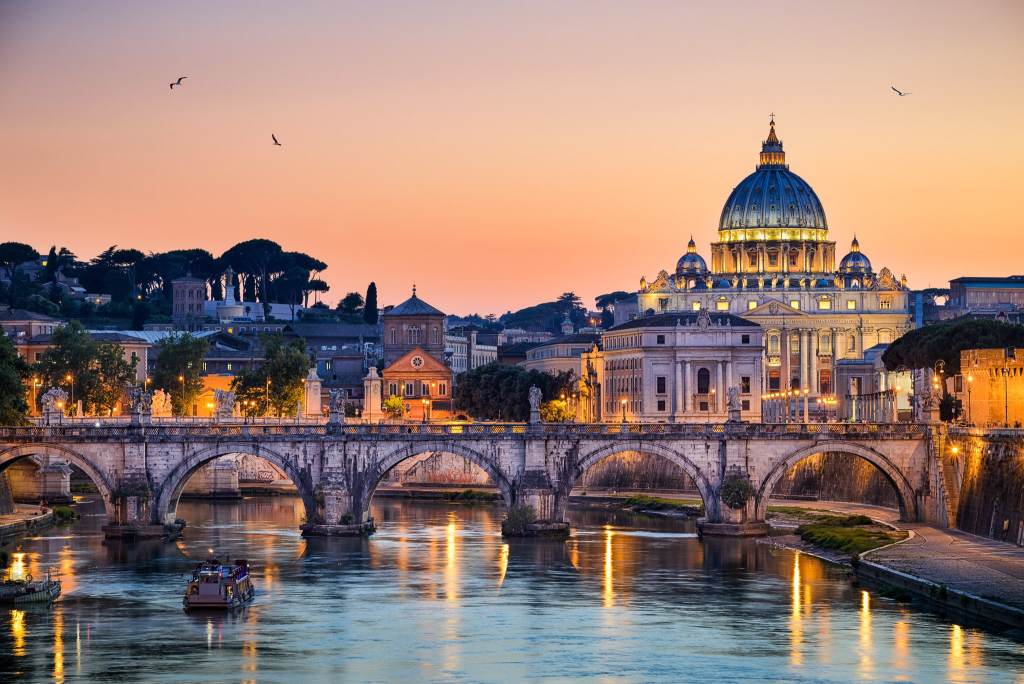
The best time to visit Rome is spring (April to June) and fall (September to October) when the weather is mild and the crowds are smaller. During these periods, visitors can enjoy pleasant temperatures, fewer lines at tourist attractions, and a more relaxed atmosphere.
While summer offers longer daylight hours, it also brings intense heat and larger tourist crowds.
Winter is quieter and can offer lower prices, but days are shorter, and some attractions may have reduced hours.
How Long to Stay in Rome
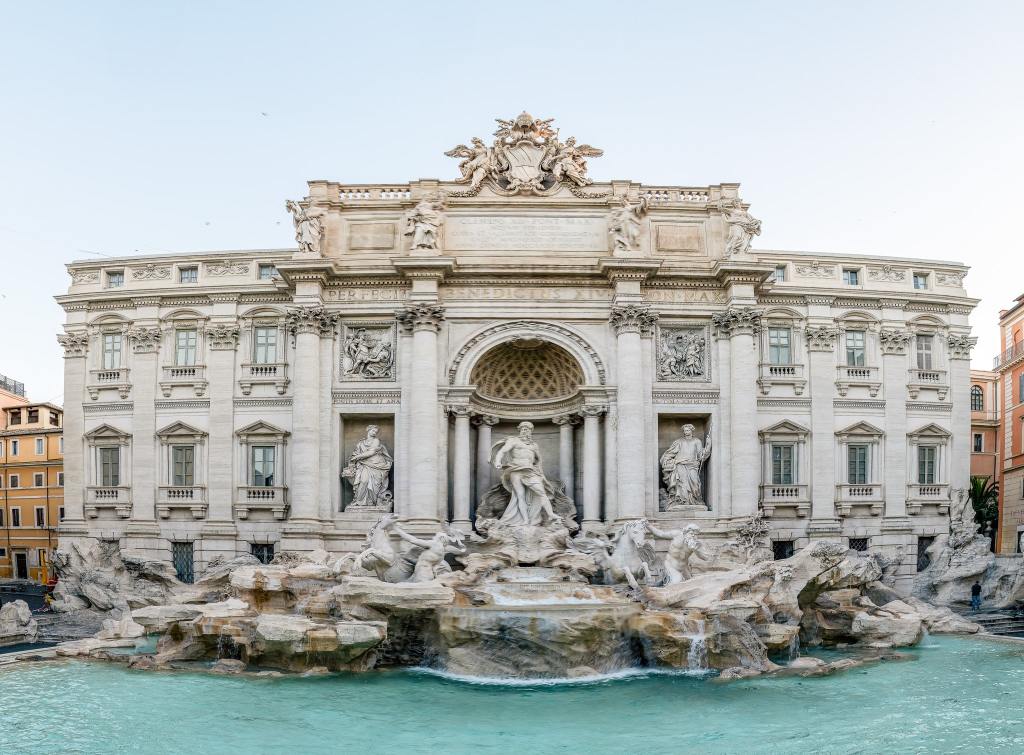
The ideal length of stay in Rome depends on individual interests and travel pace, but for a comprehensive experience, 3-5 days is recommended.
In three days, you can cover major landmarks like the Colosseum, Vatican City, Pantheon, and Trevi Fountain, while also enjoying local cuisine and neighborhoods.
An extended 4-5 days stay allows for a deeper dive into lesser-known sites, museums, and neighborhoods like Trastevere.
Even a week might feel too short for those with a keen interest in art, history, or food, as Rome’s layers of history and culture offer endless exploration opportunities.
How to Get to Rome
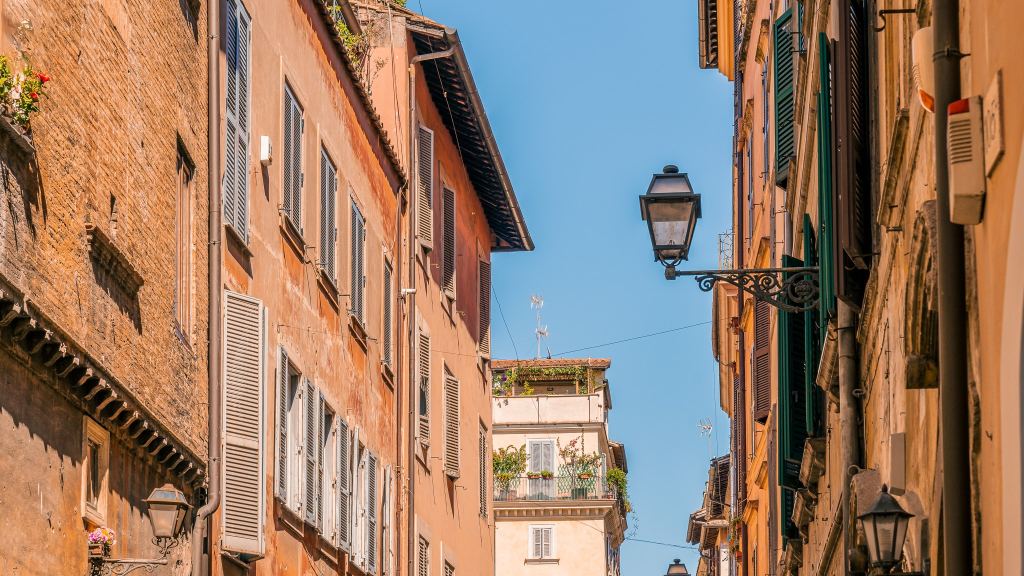
Getting to Rome by Plane
Rome is serviced by two airports:
- Leonardo da Vinci International Airport (Fiumicino – FCO): The main international airport is about 32 km southwest of Rome’s city center. It offers direct flights from numerous cities worldwide.
- Ciampino Airport (CIA): Primarily catering to low-cost carriers and charter lines, it’s closer to the city center at about 15 km.
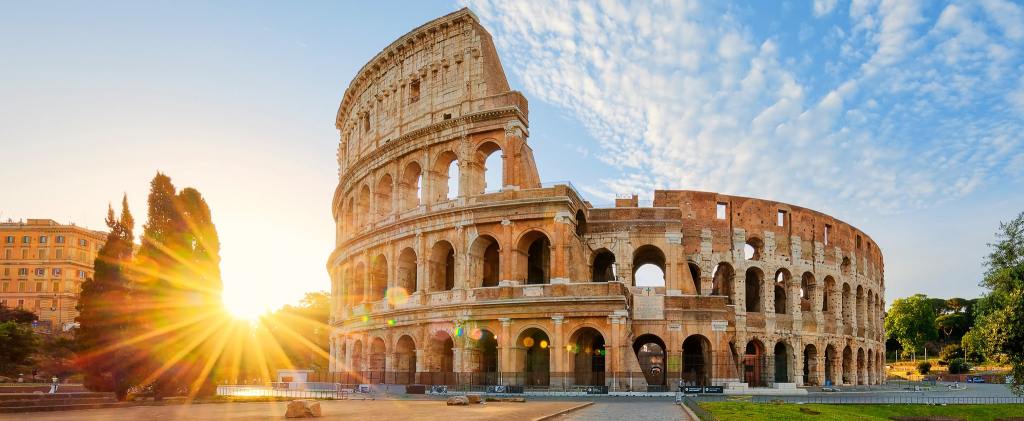
How to Get from the Airport to the City
- You can take the Leonardo Express train, buses, taxis, or rental cars from Fiumicinoto reach the city center.
- From Ciampino, buses, taxis, and rental cars are available for transfer to the city.
By Train
Rome‘s central train station, Termini, is one of the largest in Europe and connects Rome to major Italian cities and many European destinations. High-speed trains like Frecciarossa and Italo quickly connect to cities like Florence, Milan, and Naples.
By Car
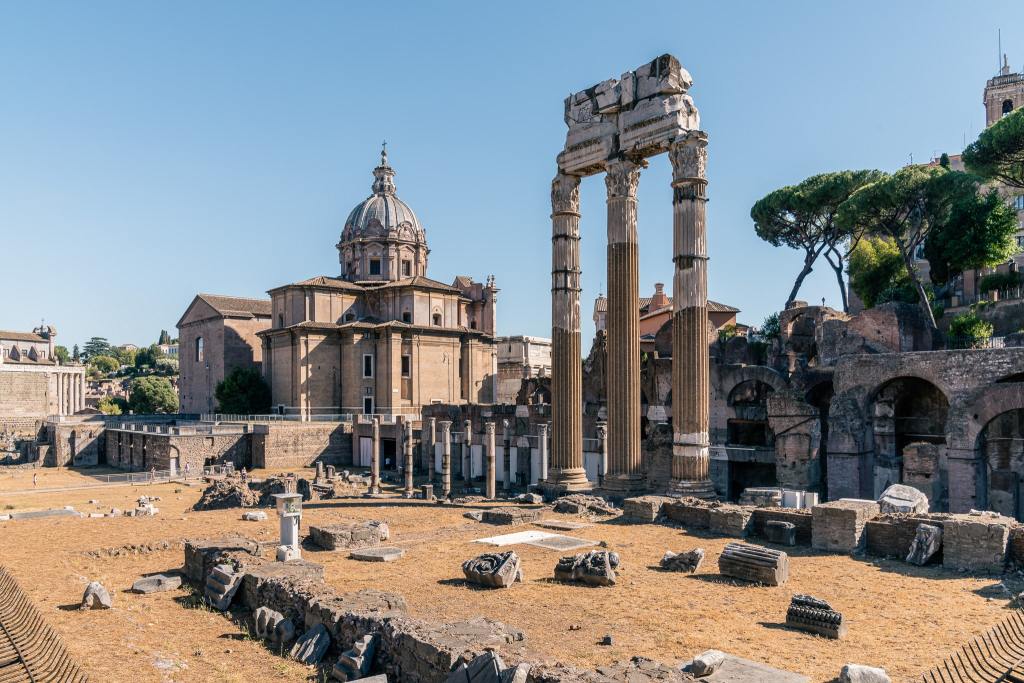
If you’re driving, be mindful of the city’s Limited Traffic Zones (ZTL) to avoid fines. The A1 Autostrada is a major highway connecting Rome to Florence and Milan in the north and Naples in the south. However, given the city’s traffic and parking challenges, other modes of transport are often advisable.
By Bus
Several long-distance bus companies operate services to Rome from various Italian and European cities. The central bus station is located adjacent to Termini train station.
By Sea
While Rome isn’t a coastal city, the nearby port of Civitavecchia serves as its main cruise port. Many Mediterranean cruise lines stop at Civitavecchia. From there, it’s a train or bus ride to Rome’s heart.
How to Get Around Rome
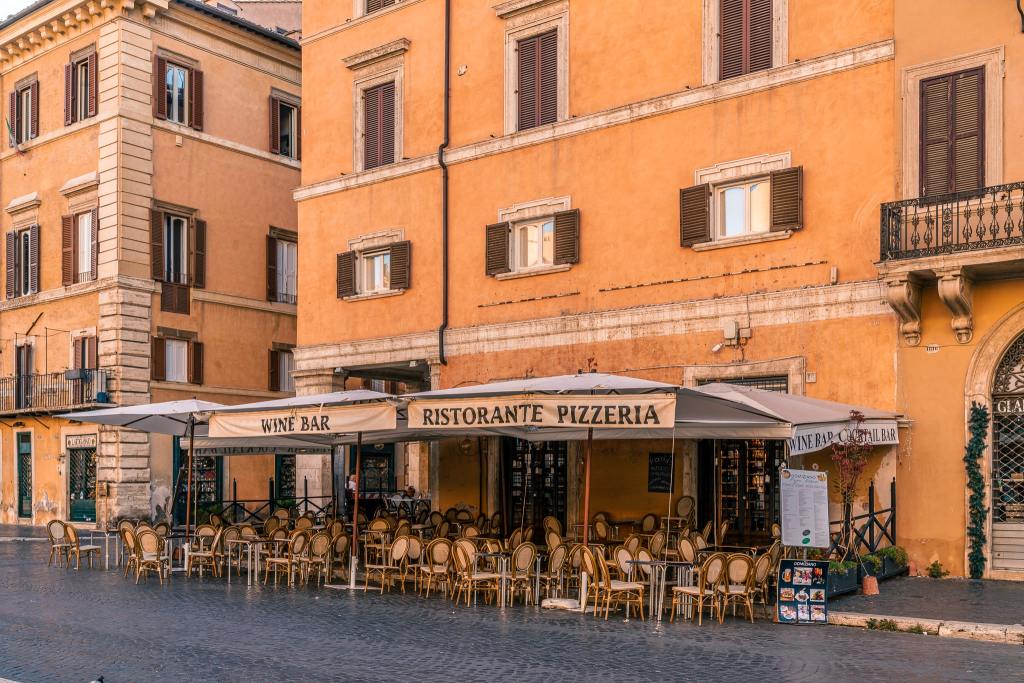
Navigating Rome is relatively easy due to its array of transportation options:
- Walking: Many of Rome’s iconic landmarks are within a short walk from each other, especially in the historic center. Exploring on foot is the best way to discover hidden gems and charming streets.
- Metro: Rome’s metro system, operated by ATAC, has three lines (A, B, and C) that cover key areas. It’s a great way to get around and often the quickest option to traverse long distances, especially during peak traffic hours.
- Buses and Trams: Rome’s extensive bus and tram network covers areas inaccessible by the metro. Buses can be slower during heavy traffic but serve a wider area.
- Tickets: For metro, buses, and trams, you can purchase tickets at metro stations, newsstands, and tobacco shops. Remember to validate your ticket before boarding. You can also travel directly with your credit/debit card in Rome.
- Taxis: Official taxis are white with a taxi sign on the roof. They can be hailed on the street or picked up at designated taxi stands. It’s recommended to ensure the meter is running to avoid overcharging.
- Hop-On Hop-Off Buses: These tour buses are popular for first-time visitors. They follow a specific route around the city’s significant sights, allowing you to hop on and off at your convenience.
- Bikes and Scooters: Cycling is becoming more popular with the increasing number of bike lanes. Electric scooter rental services are alsoavailable, which can be accessed through apps.
- Rental Cars: While having a car can benefit trips outside the city, it’s not recommended for central Rome. Traffic can be heavy, parking is scarce, and Limited Traffic Zones (ZTL) have restrictions.
- Avoiding Peak Hours: If possible, avoid traveling during rush hours (usually 7:30-9:30 am and 6-8 pm) when public transportation is most crowded.
Tip
In Rome, be aware of your surroundings, especially in crowded areas, to guard against pickpockets.
Where to Stay in Rome
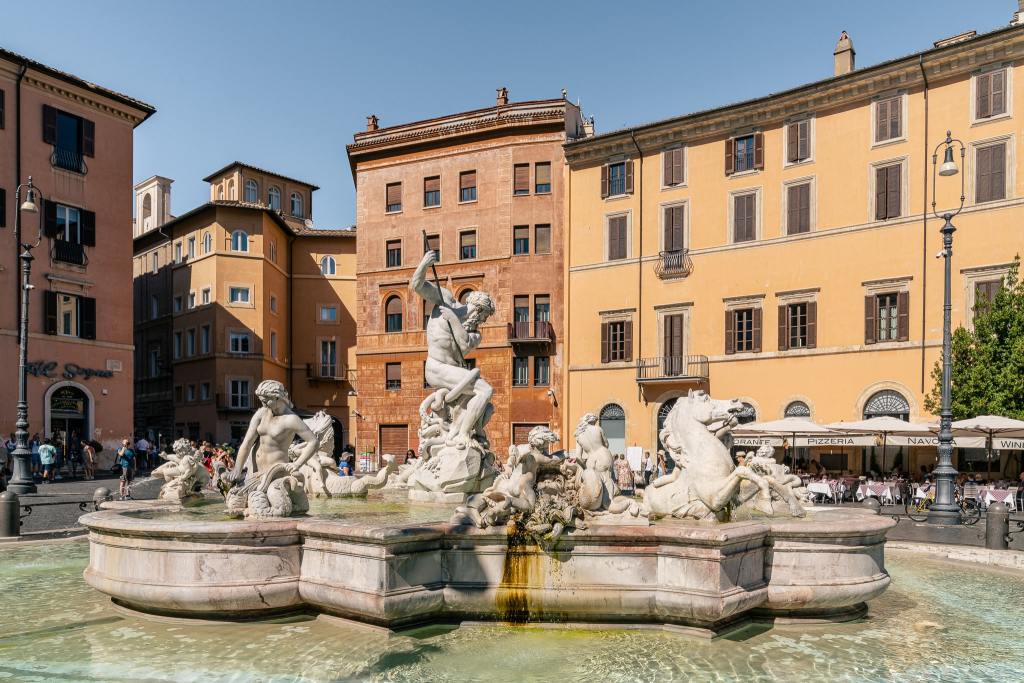
The historic center and Trastevere are some of the best places to stay in Rome.
Centro Storico, or Rome’s Historic Center, is near landmarks such as the Pantheon, Piazza Navona, and the Trevi Fountain. Staying around Pantheon is the perfect place to reach most attractions on feet. Accommodation tends to be on the pricier side, given its prime location.
On the other hand, Trastevere is celebrated for its distinctive bohemian flair, characterized by its charming cobbled pathways and dynamic nightlife. This neighborhood is a hit among visitors and locals, with many restaurants, cafes, and bars.
Join our Facebook community
World Wild Schooling * Traveling to Italy with kids
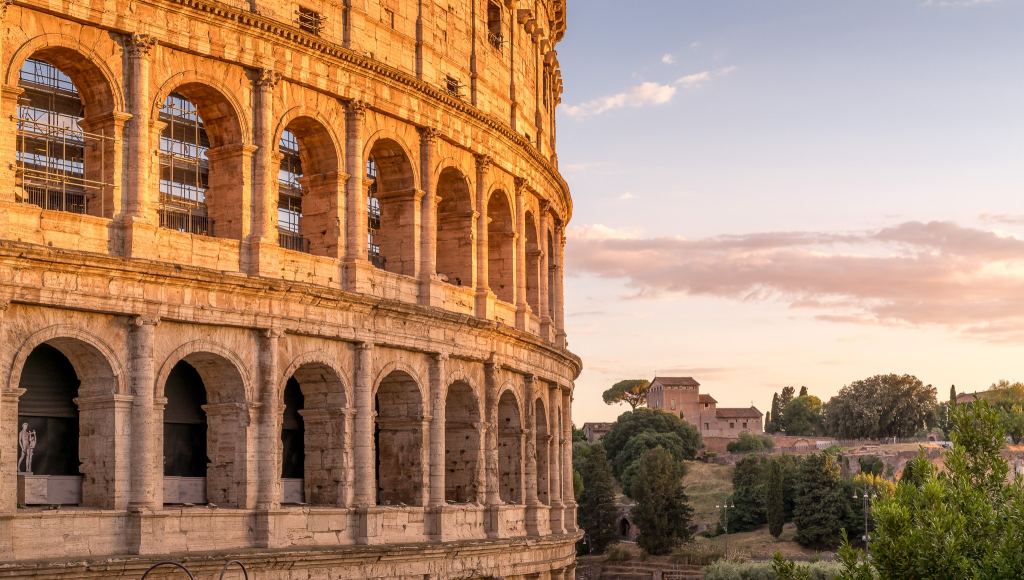
Frequently Asked Questions
What Is the Best Time of Year to Visit Rome for Less Crowded Attractions?
The best time to visit Rome for less crowded attractions is during the shoulder seasons of April to June and September to October. These periods offer a more intimate experience without the overwhelming crowds. Additionally, the weather during these months is pleasant, making your visit even more enjoyable.
Are There Any Specific Rules or Dress Codes to Follow When Visiting Religious Sites in Rome?
There are specific rules and dress codes to follow when visiting religious sites in Rome. It is important to cover your shoulders and knees as a sign of respect. To adhere to these dress codes, it is advisable to carry a scarf or shawl with you. This will ensure that you can cover up if necessary and show respect for the religious sites you are visiting.
What Are the Options for Public Transportation to Get Around the City and Visit These Attractions?
There are several options available for public transportation in Rome. You can quickly get around the city and visit various attractions using buses, trams, and the Metro. These modes of transportation are affordable and convenient. Additionally, taxis and bike rentals are also available for your convenience.
More Italy Travel Guides
Pin It Now, Read It Later
